Beth Tabler's Blog, page 185
June 4, 2022
Review – Among Thieves by M.J. Kuhn
In just over a year’s time, Ryia Cautella has already earned herself a reputation as the quickest, deadliest blade in the dockside city of Carrowwick—not to mention the sharpest tongue. But Ryia Cautella is not her real name.
For the  past six years, a deadly secret has kept her in hiding, running from town to town, doing whatever it takes to stay one step ahead of the formidable Guildmaster—the sovereign ruler of the five kingdoms of Thamorr. No matter how far or fast she travels, his servants never fail to track her down…but even the most powerful men can be defeated.
past six years, a deadly secret has kept her in hiding, running from town to town, doing whatever it takes to stay one step ahead of the formidable Guildmaster—the sovereign ruler of the five kingdoms of Thamorr. No matter how far or fast she travels, his servants never fail to track her down…but even the most powerful men can be defeated.
Ryia’s path now leads directly into the heart of the Guildmaster’s stronghold, and against every instinct she has, it’s not a path she can walk alone. Forced to team up with a crew of assorted miscreants, smugglers, and thieves, Ryia must plan her next moves very carefully. If she succeeds, her freedom is won once and for all…but unfortunately for Ryia, her new allies are nearly as selfish as she is, and they all have plans of their own.
My thoughtsAmong Thieves is an extremely impressive debut novel from M.J. Kuhn that establishes her as an exciting, fresh new voice in the fantasy genre. It was a delight to be brought into the world of Among Thieves and witness the hilarious hijinks, witty dialogue, and memorable characters that constitute this charming book. At just 340 pages, this novel is extremely accessible for fantasy fans who are used to regularly reading 500+ page doorstoppers. It was certainly a much-needed palette cleanser for me after reading the 800-page behemoth of a book that is Samantha Shannon’s The Priory of the Orange Tree. As numerous other reviewers and authors have noted, Among Thieves is a perfect fit for fans of Six of Crows by Leigh Bardugo, as well as the legions of readers who love Scott Lynch’s The Lies of Locke Lamora and are anxiously awaiting the fourth installment of the Gentleman Bastard series (I know I’m among them!). If you love rogues, you’re going to be at home with this read.
Among Thieves is the story of a thieving crew within the Five Kingdoms of Thamorr. In a heist for the ages, this motley crew bands together to try to steal a powerful but mysterious object called “the Quill,” from the immensely powerful Guildmaster. Despite the implications of the common expression, “honor among thieves” that the title of this book stems from, most of our morally gray group of characters don’t have many qualms about betraying each other. Indeed, each character has their own reasons as to why they want the Quill, and their respective plans are often inimical to the intentions of the other members of the crew.
One of my main concerns when I first heard the premise of this book was that the characters might blend together. In a relatively short book where all the main players are thieves, it’s ambitious for an author to have 5 point of view characters (six if you count the epilogue). It’d be easy for an author to struggle to differentiate and establish their characters in this circumstance. However, this is not at all an issue with Among Thieves. The characters jump off the page with each of them having their own voice, skill set, idiosyncrasies, motive, and secrets. My favorite characters were Ryia (an infamous mercenary with a dark past), Evelyn (a disgraced former captain from a law-enforcement agency), and Tristan (a teenager with quick hands and a penchant for cheating at cards). The interactions involving these three characters had me laughing out loud in cafes—which was slightly embarrassing but entirely worth it. I wanted even more time in Tristan’s point of view, but I understand why the plot demanded that we get fewer than I’d prefer. Kuhn makes some seemingly minor choices that serve to establish the uniqueness of the characters, such as Evelyn’s frequent use of the word “ruddy”; even potentially imperceptible alterations in the prose between POV chapters such as this serve to distinguish each character’s voice and help us get into their heads.
If I have one complaint regarding the characters, it’d be that Ivan, the group’s master of disguise, didn’t get fleshed out as well as I would’ve liked, and he felt as though he went through little growth. In contrast, many of the other characters experience substantial growth, especially considering the relatively short length of the novel. The LGBT representation in this book also makes it a great choice for those seeking to find novels to read for Pride Month, which is currently happening at the time of this writing.
The worldbuilding in Among Thieves is efficient, but it is not an emphasis in this book. Kuhn gives us the information that we need to understand the characters and the story, but rarely worldbuilds beyond that point. That is my personal preference for storytelling in the fantasy genre. I often find myself getting somewhat bored when an author digresses into aspects about the world that seem tangential to the plot. However, fans of sprawling, epic fantasies like the Wheel of Time by Robert Jordan or The Stormlight Archive by Brandon Sanderson may view the worldbuilding in Among Thieves as sparse. Whether Kuhn’s approach to worldbuilding is a bug or a feature depends on each reader’s personal preferences—for me, it was a feature.
Overall, I highly recommend this book for fans of heists, morally gray characters, and snappy dialogue. The fact that this is M.J. Kuhn’s debut novel has me excited about reading her future work, especially her forthcoming sequel to Among Thieves, which is entitled “Thick as Thieves.” I’ll certainly be picking that book up when it comes out in summer of 2023.
Read Among ThievesReview – Justice Calling by Annie Bellet
The post Review – Among Thieves by M.J. Kuhn appeared first on BEFOREWEGOBLOG.
June 3, 2022
Kindle Unlimited Recommendations – June
Kindle Unlimited is a service that can theoretically provide you with limitless numbers of books for the price of one normal release every month. This is a tremendous blessing for those of us who are fast readers. I pretty much have read every single Red Sonja comic ever written thanks to Dynamite Entertainment putting almost all their comics on the service.
However, what we here at Before We Go want most is good Kindle Unlimited books. As such, here is a recommendation of a bunch of entertaining ones that I’ve enjoyed and can say rise above the dross.
If you wish to see previous recommendations, go here:
1. Five Kindle Unlimited Recommendations for January
2. Five Kindle Unlimited Recommendations for February
3. Five Kindle Unlimited Recommendations for March
4. Five Kindle Unlimited Recommendations for April
5. Five Kindle Unlimited Recommendations for May
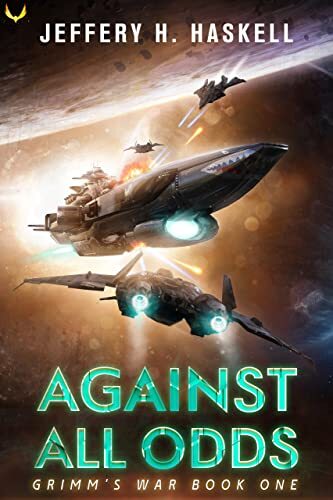 1. Against All Odds by Jeffrey Haskell
1. Against All Odds by Jeffrey HaskellLink
Against All Odds is a great military science fiction novel set in a politically complex world where various human-based powers compete for control of an important trading region. Jacob Grimm is exiled to an assignment where he’s expected to cause an international incident after being unfairly blamed for the death of children during an enemy attack.
Haskell has an excellent grasp of world-building as well as characterization, making his protagonists likable and his antagonists deeply hateable. The plot moves at a brisk pace and the action is quite good. Some individuals may view the setting as a bit too Call of Duty in Space (the enemy being the Caliphate and the Russian-styled Iron Empire) but I just took it in good fun.
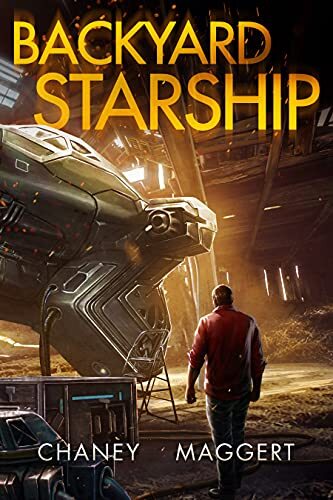 2. Backyard Spaceship by J.N. Chaney and Terry Maggert
2. Backyard Spaceship by J.N. Chaney and Terry MaggertLink
I really enjoyed this story about a former Army Intelligence officer finding out that his grandfather was a space policeman and left him his starship. It’s an interesting, mostly episodic, story that works well as a bit of escapism in a rough time. I liked the characters, his AI crew, and the Mass Effect-like set up.
Backyard Spaceship doesn’t take it’s worldbuilding too seriously but is a light, easy read that most fans of science fiction will enjoy. I especially like how our bounty-hunting protagonist has to worry about fuel as well as other expenditures.
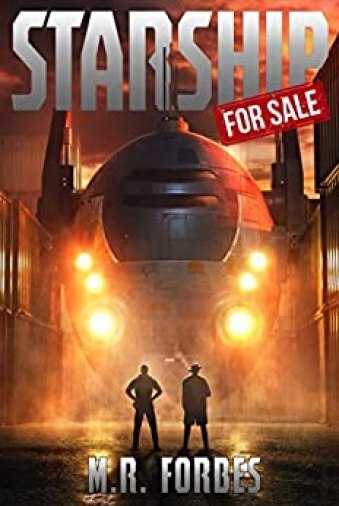 3. Starship for Sale by M.R. Forbes
3. Starship for Sale by M.R. ForbesLink
Starship for Sale is a story in the vein of the Explorers and The Last Starfighter. A young teenager finds out he’s dying of cancer when he receives a weird text that leads him to a starship for sale. Soon, he and his best friend are travelling across the universe with a price on their heads and no idea how to deal with their situation. This is a really fun book and great for an afternoon’s read. It is both silly and poignant in equal respects.
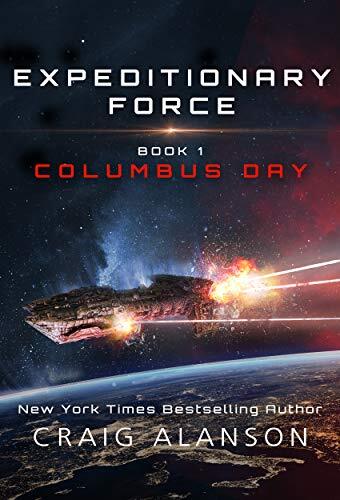 4. Columbus Day (Expeditionary Force #1) by Craig Alanson
4. Columbus Day (Expeditionary Force #1) by Craig Alanson
Link
Expeditionary Force starts a bit slow but has rapidly become one of my favorite series. The adventures of Sergeant Joe Bishop and the all-powerful AI Skippy the Magnificent is a fascinating story that I enjoyed from beginning to end. Columbus Day is a bit rough around the edges, at least until Skippy shows up but has a lot of fantastic worldbuilding.
Humanity survived First Contact with a seemingly hostile race only to ally with another one. Unfortunately, it turns out that they allied with the wrong one. Now it may be too late to save humanity but our insane tactics and weird new ally say otherwise.
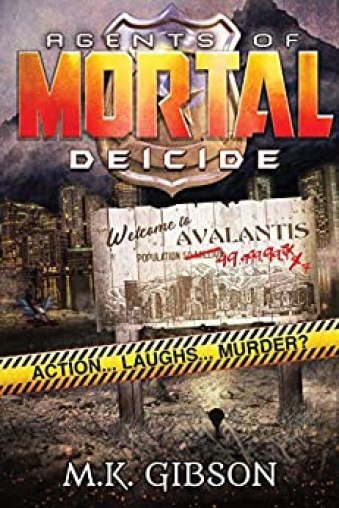 5. Deicide (Agents of MORTAL #1) by Michael Gibson
5. Deicide (Agents of MORTAL #1) by Michael GibsonLink
I’m a huge fan of Michael Gibsons books and Agents of Mortal may well be my favorite. America has put all of its gods, fairies, and other supernatural beings in Alaska. This has resulted in it becoming a thriving land of weirdness with overwhelmed human police officers. It’s a silly and bizarre idea but one that I very much enjoyed. Sort of like if you combined Brooklyn 911 and Percy Jackson.
The post Kindle Unlimited Recommendations – June appeared first on BEFOREWEGOBLOG.
33 Books With LGBTQIAP+ Representation to Add to Your TBR
With the success of the first list, had to make an additional list. Even with these total books, 55 now, there are still so many wonderful books out there that should be read!
So kick back, and scan the list. Maybe some new favorites will pop out to check out. Perhaps, there are some classics here that deserve a reread.
Happy Pride Month to the LGBTQIAP+ community!

A dark lord will rise. Such is the prophecy that dogs Ringil Eskiath—Gil, for short—a washed-up mercenary and onetime war hero whose cynicism is surpassed only by the speed of his sword. Gil is estranged from his aristocratic family, but when his mother enlists his help in freeing a cousin sold into slavery, Gil sets out to track her down. But it soon becomes apparent that more is at stake than the fate of one young woman. Grim sorceries are awakening in the land. Some speak in whispers of the return of the Aldrain, a race of widely feared, cruel yet beautiful demons. Now Gil and two old comrades are all that stand in the way of a prophecy whose fulfillment will drown an entire world in blood. But with heroes like these, the cure is likely to be worse than the disease.
link to purchase
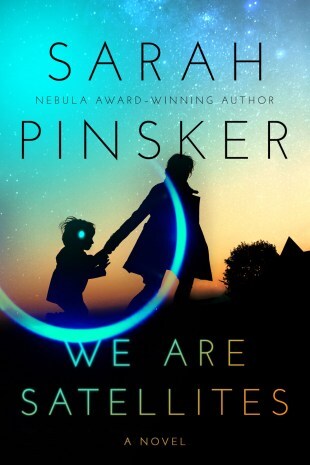
Everybody’s getting one.
Val and Julie just want what’s best for their kids, David and Sophie. So when teenage son David comes home one day asking for a Pilot, a new brain implant to help with school, they reluctantly agree. This is the future, after all.
Soon, Julie feels mounting pressure at work to get a Pilot to keep pace with her colleagues, leaving Val and Sophie part of the shrinking minority of people without the device.
Before long, the implications are clear, for the family and society: get a Pilot or get left behind. With government subsidies and no downside, why would anyone refuse? And how do you stop a technology once it’s everywhere? Those are the questions Sophie and her anti-Pilot movement rise up to answer, even if it puts them up against the Pilot’s powerful manufacturer and pits Sophie against the people she loves most.
link to purchase
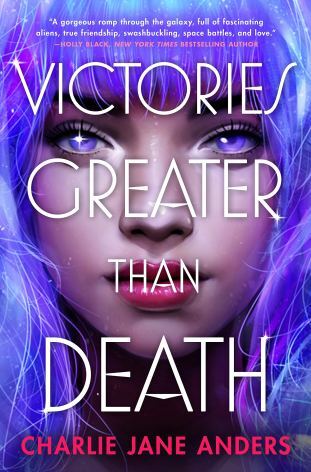
Outsmart Your Enemies. Outrun the Galaxy.
Tina never worries about being ‘ordinary’—she doesn’t have to, since she’s known practically forever that she’s not just Tina Mains, average teenager and beloved daughter. She’s also the keeper of an interplanetary rescue beacon, and one day soon, it’s going to activate, and then her dreams of saving all the worlds and adventuring among the stars will finally be possible. Tina’s legacy, after all, is intergalactic—she is the hidden clone of a famed alien hero, left on Earth disguised as a human to give the universe another chance to defeat a terrible evil.
But when the beacon activates, it turns out that Tina’s destiny isn’t quite what she expected. Things are far more dangerous than she ever assumed. Luckily, Tina is surrounded by a crew she can trust, and her best friend Rachael, and she is still determined to save all the worlds. But first she’ll have to save herself.
Buckle up your seatbelt for this thrilling sci-fi adventure set against an intergalactic war from international bestselling author Charlie Jane Anders.
link to purchase
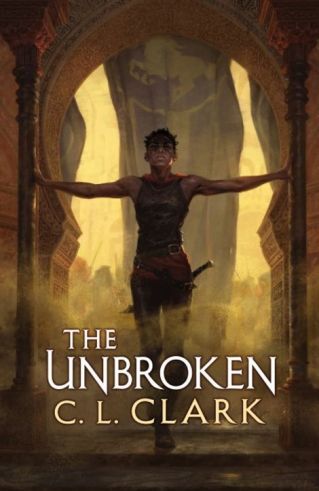
Touraine is a soldier. Stolen as a child and raised to kill and die for the empire, her only loyalty is to her fellow conscripts. But now, her company has been sent back to her homeland to stop a rebellion, and the ties of blood may be stronger than she thought.
Luca needs a turncoat. Someone desperate enough to tiptoe the bayonet’s edge between treason and orders. Someone who can sway the rebels toward peace, while Luca focuses on what really matters: getting her uncle off her throne.
Through assassinations and massacres, in bedrooms and war rooms, Touraine and Luca will haggle over the price of a nation. But some things aren’t for sale.
link to purchase
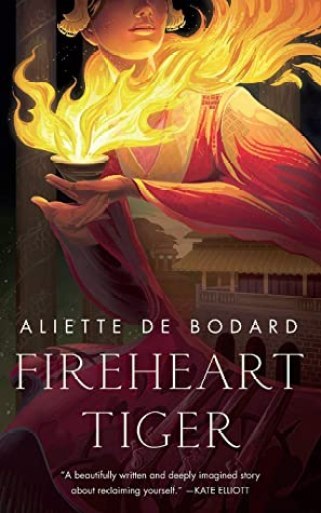
Award-winning author Aliette de Bodard returns with a powerful romantic fantasy that reads like The Goblin Emperor meets Howl’s Moving Castle in a pre-colonial Vietnamese-esque world.
Fire burns bright and has a long memory….
Quiet, thoughtful princess Thanh was sent away as a hostage to the powerful faraway country of Ephteria as a child. Now she’s returned to her mother’s imperial court, haunted not only by memories of her first romance, but by worrying magical echoes of a fire that devastated Ephteria’s royal palace.
Thanh’s new role as a diplomat places her once again in the path of her first love, the powerful and magnetic Eldris of Ephteria, who knows exactly what she wants: romance from Thanh and much more from Thanh’s home. Eldris won’t take no for an answer, on either front. But the fire that burned down one palace is tempting Thanh with the possibility of making her own dangerous decisions.
Can Thanh find the freedom to shape her country’s fate—and her own?
link to purchase
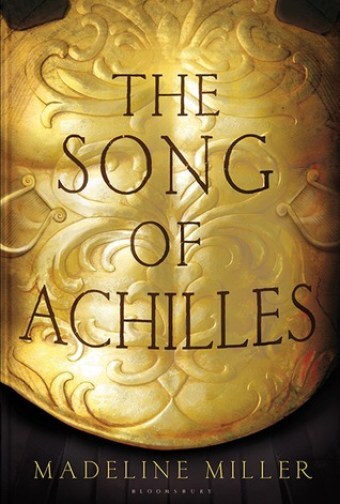
Greece in the age of heroes. Patroclus, an awkward young prince, has been exiled to the court of King Peleus and his perfect son Achilles. By all rights their paths should never cross, but Achilles takes the shamed prince as his friend, and as they grow into young men skilled in the arts of war and medicine their bond blossoms into something deeper – despite the displeasure of Achilles’ mother Thetis, a cruel sea goddess. But then word comes that Helen of Sparta has been kidnapped. Torn between love and fear for his friend, Patroclus journeys with Achilles to Troy, little knowing that the years that follow will test everything they hold dear.
Profoundly moving and breathtakingly original, this rendering of the epic Trojan War is a dazzling feat of the imagination, a devastating love story, and an almighty battle between gods and kings, peace and glory, immortal fame and the human heart.
link to purchase

When young Alec of Kerry is taken prisoner for a crime he didn’t commit, he is certain that his life is at an end. But one thing he never expected was his cellmate. Spy, rogue, thief, and noble, Seregil of Rhiminee is many things–none of them predictable. And when he offers to take on Alec as his apprentice, things may never be the same for either of them. Soon Alec is traveling roads he never knew existed, toward a war he never suspected was brewing. Before long he and Seregil are embroiled in a sinister plot that runs deeper than either can imagine, and that may cost them far more than their lives if they fail. But fortune is as unpredictable as Alec’s new mentor, and this time there just might be… Luck in the Shadows.
link to purchase

Kiram Kir-Zaki may be considered a mechanist prodigy among his own people, but when he becomes the first Haldiim ever admitted to the prestigious Sagrada Academy, he is thrown into a world where power, superstition and swordplay outweigh even the most scholarly of achievements.
But when the intimidation from his Cadeleonian classmates turns bloody, Kiram unexpectedly finds himself befriended by Javier Tornesal, the leader of a group of cardsharps, duelists and lotharios who call themselves Hellions.
However Javier is a dangerous friend to have. Wielder of the White Hell and sole heir of a dukedom, he is surrounded by rumors of forbidden seductions, murder and damnation. His enemies are many and any one of his secrets could not only end his life but Kiram’s as well.
link to purchase

The Realms have split apart, the Stones of Elation have been hidden, and warnings of dokojin drift among the tribes.
The land and its people are corrupted. The Sachem, chief of the Unified Tribes, is to blame.
It is this conviction that drives Annilasia and Delilee to risk their lives. Afraid of the aether magic he wields, they enact a subtler scheme: kidnap his wife. In her place, Delilee will pretend to be the chieftess and spy on the Sachem.
Unaware of this plot against her husband, Jalice is whisked away by Annilasia. Pleading with her captor proves futile, and she rejects Annilasia’s delusional accusations against the chief. After all, the Sachem has brought peace to the land.
Yet a dangerous truth hides in Jalice’s past. As she and Annilasia flee through a forest of insidious threats, they must confront the evil plaguing the tribes and the events that unleashed it.
link to purchase
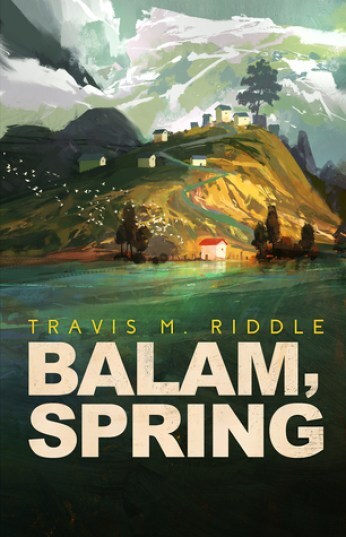
Balam is a sleepy town on the eastern coast of Atlua, surrounded by forest and sea. It’s a village where nothing happens and everybody knows each other. But now, people are dying.
School is out for the spring, and schoolteacher Theodore Saen is ready to spend the next few months relaxing with his family. But when the town’s resident white mage falls ill and several townspeople begin to show similar symptoms, they must call on a new mage. Aava has freshly graduated from the nearby mage academy when she is swiftly hired to deduce the cause of the unknown illness and craft a cure before the entire town is afflicted. Aiding her is an ex-mercenary named Ryckert who keeps to himself but has grown bored with retirement and is itching for a new investigation when a suspicious young man appears in the local pub the same night the sickness begins to spread.
On top of it all, whatever is causing the sickness seems to be attracting strange insectoid creatures from the surrounding woods, desecrating the bodies of the victims and tearing through anyone unlucky enough to cross their path. Theo, Aava, and Ryckert must come together to discover the cause of the illness and put a stop to it before there is nobody left alive in Balam.
link to purchase
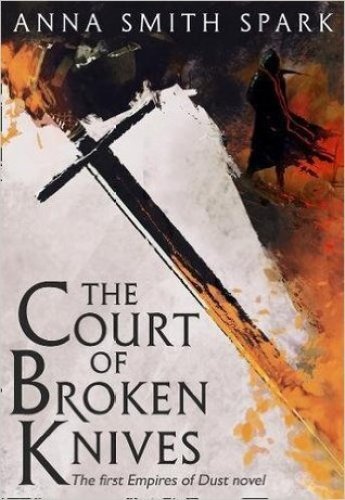
They’ve finally looked at the graveyard of our Empire with open eyes. They’re fools and madmen and like the art of war. And their children go hungry while we piss gold and jewels into the dust.
In the richest empire the world has ever known, the city of Sorlost has always stood, eternal and unconquered. But in a city of dreams governed by an imposturous Emperor, decadence has become the true ruler, and has blinded its inhabitants to their vulnerability. The empire is on the verge of invasion – and only one man can see it.
Haunted by dreams of the empire’s demise, Orhan Emmereth has decided to act. On his orders, a company of soldiers cross the desert to reach the city. Once they enter the Palace, they have one mission: kill the Emperor, then all those who remain. Only from ashes can a new empire be built.
The company is a group of good, ordinary soldiers, for whom this is a mission like any other. But the strange boy Marith who walks among them is no ordinary soldier. Marching on Sorlost, Marith thinks he is running away from the past which haunts him. But in the Golden City, his destiny awaits him – beautiful, bloody, and more terrible than anyone could have foreseen.
link to purchase
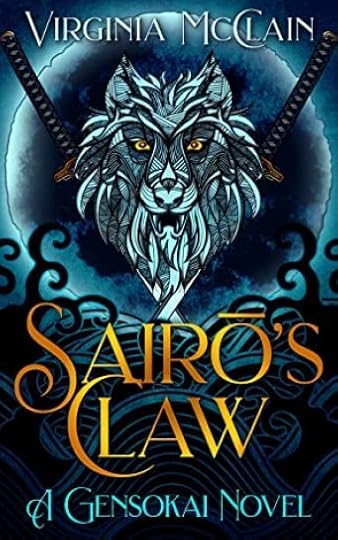
An action-adventure fantasy romp featuring sword lesbians, sea battles, and a grumpy wolf spirit.
Torako has done many things to protect the valley that she calls home, but she’s never looted a corpse before. So when the katana she steals off the still-cooling body of a bandit turns out to be possessed by a grumpy wolf kami, she can only assume it’s because she’s somehow angered the spirits. An impression that’s only reinforced when she returns home to find her wife abducted and her daughter in hiding. But angry spirits or no, Torako isn’t about to let bandits run off with the love of her life, even if it means taking their 3 year old on a rescue mission.
In all Kaiyo’s years as Captain of the Wind Serpent she has never once questioned her admiral’s orders. So when she receives the command to abduct a civilian scribe with the help of fifteen felons, she registers her objections, but does as she is bid. Yet, as the mission unfolds, Kaiyo finds herself questioning everything from her loyalties to her convictions.
As Torako and Kaiyo’s fates cross like dueling blades, their persistence is matched only by their fury, until they uncover a series of truths they may never be ready to accept.
link to purchase
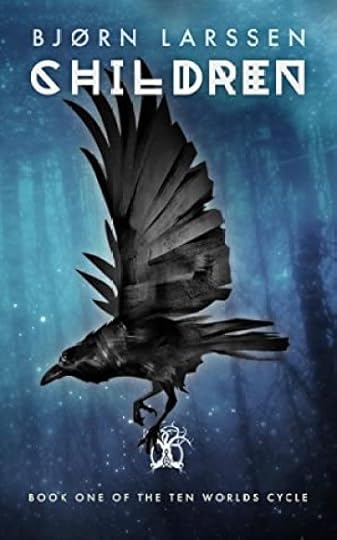
Gods make lousy parents.
All Magni wants is peace and quiet, but when your father is the God of thunder, you don’t get to live the life you want. When Thor destroys all his son knows and loves, Magni vows to bring prosperity and end the violence… forever. But can you escape cruelty in a universe built on it, or the shadow of your father when everyone calls you by his name?
Maya, her rage more powerful than she knows, wants freedom to pursue her own destiny. Neither torture nor blackmail can make her obedient or pretty enough for Freya, her foster-mother and Goddess of love. Fighting for independence and revenge, can a mere human win a game where Gods dictate the rules?
link to purchase

Guthrie was a good place to be from, but it wasn’t a great place to live, not when you were like Adam, in all the ways Adam was like Adam.
Adam Binder hasn’t spoken to his brother in years, not since Bobby had him committed to a psych ward for hearing voices. When a murderous spirit possesses Bobby’s wife and disrupts the perfect life he’s built away from Oklahoma, he’s forced to ask for his little brother’s help. Adam is happy to escape the trailer park and get the chance to say I told you so, but he arrives in Denver to find the local magicians dead.
It isn’t long before Adam is the spirit’s next target. To survive the confrontation, he’ll have to risk bargaining with powers he’d rather avoid, including his first love, the elf who broke his heart.
The Binder brothers don’t realize that they’re unwitting pawns in a game played by immortals. Death herself wants the spirit’s head, and she’s willing to destroy their family to reap it.
link to purchase
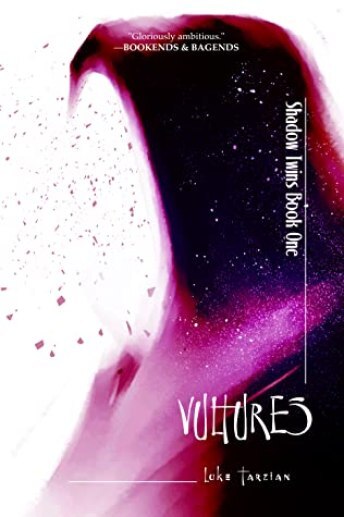
An enemy slain is not a conflict won…
After decades of war the demon Te Mirkvahíl is dead. But its progeny endure, spilling from the Heart of Mirkúr, sowing death across the land of Ariath. If the people are to finally know peace, the Heart must be destroyed. Theailys An believes he can do just that with The Keepers’ Wrath, an infamous power focus wrought in Ariath’s yesteryears–but the weapon first must be reforged.
War spares no one…
Serece never intended to get involved in Ariath’s war. But history and demons have a way of pulling strings. When she learns Theailys An, a man whom she abhors, bears striking similarity to the first creator of The Keepers’ Wrath, Serece departs her mountain world for Ariath to ascertain the truth.
From patience, hope…
For millennia Behtréal has walked the world alone. Rewriting history to resurrect his people is easier said than done. But Ariath holds the key–soon The Keepers’ Wrath will be remade.
Truth from madness…
As paths converge and a shadow falls across Ariath, one thing becomes increasingly and horrifyingly clear–these events have played out many times before.
link to purchase

A brutal wilderness.
Hungry, plague-ridden animals.
A winter so cold it snaps wood.
Chemosh, a scout imprisoned by the enemy, agrees to lead the way through this wilderness for his freedom. But both his knowledge and his resilience are put to the test, not just by the wilderness, but by the chaotic, violent man he guides. A man he must rely on if they are to survive.
link to purchase

Alexis McRiott is a foul-mouthed guitar goddess with a passion for hair-metal and groupies of the fairer sex. You’d never recognize this strung-out Hollywood dirtbag as the squeaky-clean kid wizard she used to play on TV.
And that suits her just fine.
But when Alexis is killed in a freak accident, her sitcom past comes back to haunt her. On her first day as a ghost she destroys a rampaging poltergeist using a hex from her old show that, for some reason, actually works.
Impressed by her powers, a deceased medieval prince tries to recruit Alexis in his crusade against otherworldly evil, but she refuses to be his clichéd “chosen one” magical heroine. That is, until she meets his sister-in-arms—a smokin’ hot Chinese railroad worker duty-bound to protect the living from supernatural threats.
Pursued by soul-collecting reapers, this motley crew must stop a paranormal apocalypse that Alexis might have been kinda, sorta, completely responsible for unleashing. But can two dead lesbians and a seven-hundred-year-old tween save the world with sitcom magic?
They don’t stand a ghost of a chance.
link to purchase

A wild ride stuffed to the cut-lines with humor, heart, and space shenanigans.
May’s humdrum life gets flung into hyperdrive when she’s abducted, but not all aliens are out to probe her. She’s inadvertently rescued by Xan who’s been orbiting Earth in a day-glo orange rocket ship, watching re-runs of “I Love Lucy”.
Seizing the opportunity for a better life, May learns how to race the Audacity and pilots her way into interstellar infamy. Finally, she has a job she likes and a friend to share her winnings with—until the Goddess of Chaos screws the whole thing up, and Xan’s unmentionable past makes a booty call.
If Douglas Adams got punted into a sticky orange pool of feminism and made sweet love to Futurama, you’d have something approximating The Audacity.
Fans of Hitchhiker’s Guide to the Galaxy will appreciate the style, fans of Futurama will love the blend of laugh out loud humor and feels, fans of Steven Universe will enjoy that Space is Very Gay.
If you’re tired of the same old cynical, militaristic sci-fi and crave characters who genuinely care about each other and an image of life in the Universe that isn’t all gloom and doom, you’re going to have a good time in the Audacity.
link to purchase
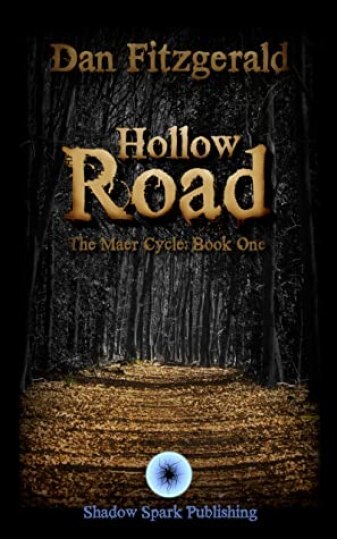
Legends describe the Maer as savage man-beasts haunting the mountains, their bodies and faces covered with hair. Creatures of unimaginable strength, cunning, and cruelty. Bedtime stories to keep children indoors at night. Soldiers’ tales to frighten new recruits.
It is said the Maer once ruled the Silver Hills, but they have long since passed into oblivion.
This is the story of their return.
Carl, Sinnie and Finn, three companions since childhood, are tasked with bringing a friend’s body home for burial. Along the way, they find there is more to the stories than they ever imagined, and the mountains hold threats even darker than the Maer. What they discover on their journey will change the way they see the world forever.
Travel down Hollow Road to find out which legends are true, and which have been twisted.
link to purchase

“That girl’s got more wrong notions than a barn owl’s got mean looks.”
Esther is a stowaway. She’s hidden herself away in the Librarian’s book wagon in an attempt to escape the marriage her father has arranged for her—a marriage to the man who was previously engaged to her best friend. Her best friend who she was in love with. Her best friend who was just executed for possession of resistance propaganda. The future American Southwest is full of bandits, fascists, and queer librarian spies on horseback trying to do the right thing.
link to purchase
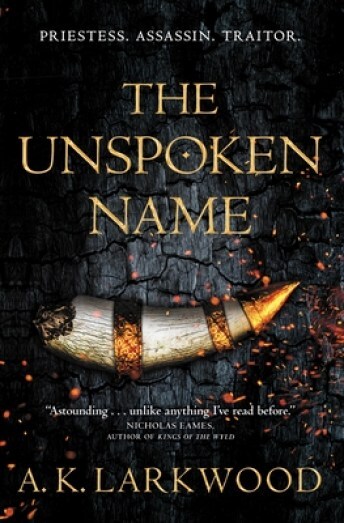
What if you knew how and when you will die?
Csorwe does. She will climb the mountain, enter the Shrine of the Unspoken, and gain the most honored title: sacrifice. On the day of her foretold death, however, a powerful mage offers her a new fate.
Csorwe leaves her home, her destiny, and her god to become the wizard’s loyal sword-hand — stealing, spying, and killing to help him reclaim his seat of power in the homeland from which he was exiled.
But Csorwe and the wizard will soon learn – gods remember, and if you live long enough, all debts come due.
link to purchase
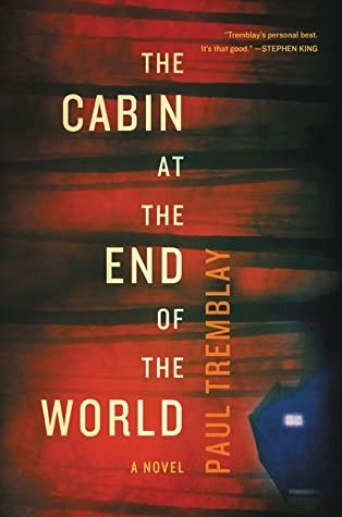
The Bram Stoker Award-winning author of A Head Full of Ghosts adds an inventive twist to the home invasion horror story in a heart-palpitating novel of psychological suspense that recalls Stephen King’s Misery, Ruth Ware’s In a Dark, Dark Wood, and Jack Ketchum’s cult hit The Girl Next Door.
Seven-year-old Wen and her parents, Eric and Andrew, are vacationing at a remote cabin on a quiet New Hampshire lake. Their closest neighbors are more than two miles in either direction along a rutted dirt road.
One afternoon, as Wen catches grasshoppers in the front yard, a stranger unexpectedly appears in the driveway. Leonard is the largest man Wen has ever seen but he is young, friendly, and he wins her over almost instantly. Leonard and Wen talk and play until Leonard abruptly apologizes and tells Wen, “None of what’s going to happen is your fault”. Three more strangers then arrive at the cabin carrying unidentifiable, menacing objects. As Wen sprints inside to warn her parents, Leonard calls out: “Your dads won’t want to let us in, Wen. But they have to. We need your help to save the world.”
Thus begins an unbearably tense, gripping tale of paranoia, sacrifice, apocalypse, and survival that escalates to a shattering conclusion, one in which the fate of a loving family and quite possibly all of humanity are entwined. The Cabin at the End of the World is a masterpiece of terror and suspense from the fantastically fertile imagination of Paul Tremblay.
link to purchase
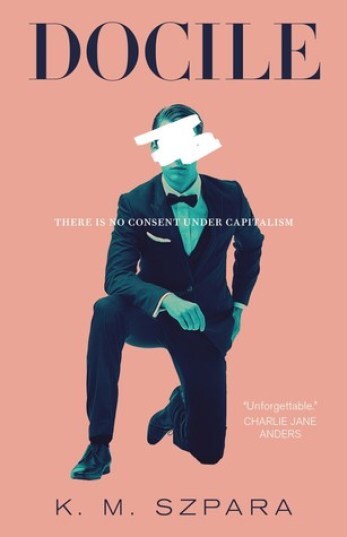
There is no consent under capitalism
Docile is a science fiction parable about love and sex, wealth and debt, abuse and power, a challenging tour de force that at turns seduces and startles.
To be a Docile is to be kept, body and soul, for the uses of the owner of your contract. To be a Docile is to forget, to disappear, to hide inside your body from the horrors of your service. To be a Docile is to sell yourself to pay your parents’ debts and buy your children’s future.
Elisha Wilder’s family has been ruined by debt, handed down to them from previous generations. His mother never recovered from the Dociline she took during her term as a Docile, so when Elisha decides to try and erase the family’s debt himself, he swears he will never take the drug that took his mother from him. Too bad his contract has been purchased by Alexander Bishop III, whose ultra-rich family is the brains (and money) behind Dociline and the entire Office of Debt Resolution. When Elisha refuses Dociline, Alex refuses to believe that his family’s crowning achievement could have any negative side effects—and is determined to turn Elisha into the perfect Docile without it.
link to purchase

Fenn’s first and only memory is finding himself in the middle of a forest, face to face with a dragon spirit mocking him, all knowledge gone apart from his own name.
Lost and confused, his only hope for answers is Calidra—a woman living on the edge of the world with her partner. Forced to return home when her father dies, Calidra has put off facing her estranged mother for seven years, and she begrudgingly helps Fenn, forging papers for him so he can avoid the Queen’s Inquisitors.
But her mother is the least of her worries when they discover an ancient enemy is rising again. It should be impossible with the Iron Crown in power—and Fenn is terrified he might unwittingly be playing a part in the war’s resurgence.
Surrounded by vengeful spirits and powerful magic, Fenn’s desperate attempt to find his way home might well alter the fate of Tassar, and every power in it.
link to purchase
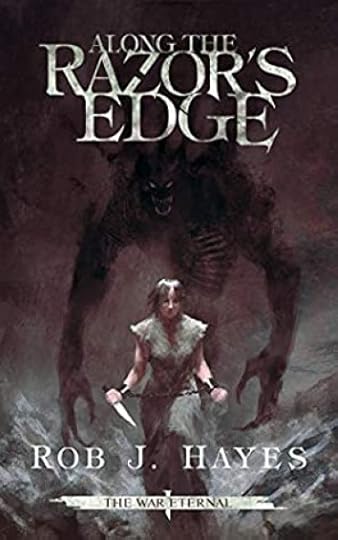
No one escapes the Pit.
At just fifteen Eskara Helsene fought in the greatest war mankind has ever known. Fought and lost. There is only one place her enemies would send a Sourcerer as powerful as her, the Pit, a prison sunk so deep into the earth the sun is a distant memory. Now she finds herself stripped of her magic; a young girl surrounded by thieves, murderers, and worse. In order to survive she will need to find new allies, play the inmates against each other, and find a way out. Her enemies will soon find Eskara is not so easily broken.
An emotional roller coaster in this unique coming of age story. Perfect for fans of Patrick Rothfuss and Mark Lawrence, be one of the first dive into Award-Winning Author Rob J. Hayes’ new epic fantasy world.
link to purchase
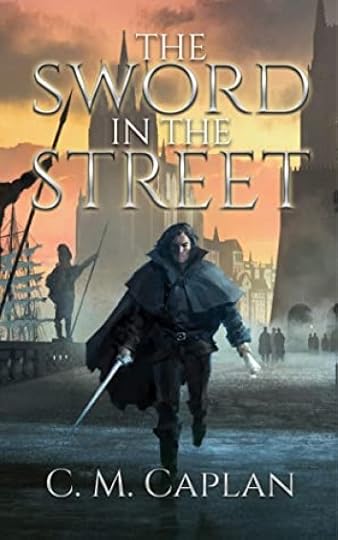
Trial by battle is a holy rite on Hillside. Hired blades bleed their foes in savage duels, settling everything from petty grievances to the corporate laws that keep their citizens in line. Embroiled in these cutthroat political games is John Chronicle, an impoverished swordsman with no better prospects, seeking the duel that will free him from the Dregs.
Meanwhile, John’s boyfriend Edwin, an autistic university student, befriends a fellow scholar who claims to study the arcane art of thaumaturgy. When she offers to teach Edwin this subtle magic, he hopes that he can use it to bolster John’s skill with a blade. But thaumaturgy is a dangerous magic, and the forces that drive it have other plans.
The couple soon find themselves entangled in the web of intrigue surrounding the swordsmen and their sponsors, and they’re forced to question how bloody they’re willing to get to escape poverty — and they don’t come away with the same answer.
link to purchase
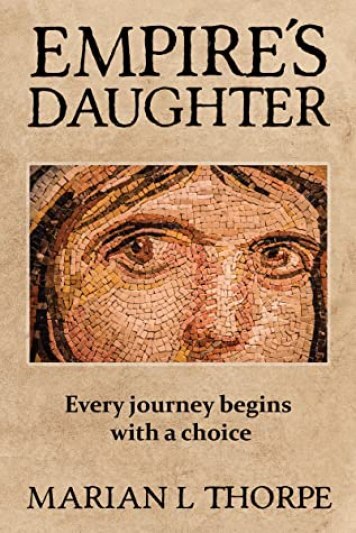
Eric Hoffer Finalist, 2021; IndieBRAG recipient, 2021; Silver Medal, Historical Fantasy Box Set of the Year (as part of Empire’s Legacy) 2019.
Lena’s world is about to change forever. Harried from north and south by two different enemies, both wanting this last remnant of a greater Empire’s land, and with invasion imminent, the military leaders see no choice but to ask the unthinkable: that women learn to fight.
In accepting the challenge, Lena is separated from her lover, who chooses banishment rather than break with generations of tradition. Promoted to leadership, drawn into the intrigues of power, Lena must make difficult choices, for herself, for her village, and for her country: a young woman at the heart of the violence and diplomacy that will begin her epic journey to save her land. Evoking Europe after the decline of Rome, the imagined world of Empire’s Daughter and its sequels is brought to vivid, believable life by the precise and powerful writing of Marian L Thorpe.
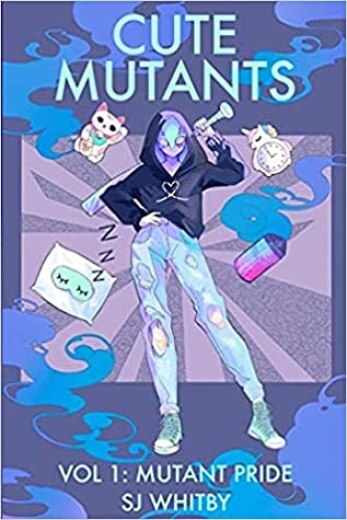
My name is Dylan Taylor, human incarnation of the burning dumpster gif, and this is my life.
I always wanted to be an X-Man. Except people and me never got along, and apparently you need social skills to run a successful team. Cue Emma Hall’s party. One hot make out session with the host herself, and I can talk to objects like my pillow (who’s far too invested in my love life) and my baseball bat (who was a pacifist before I got hold of him). Now there’s a whole group of us with strange abilities, including super hot ice queen Dani Kim who doesn’t approve of how reckless I can be. The bigger problem is a mysterious mutant causing unnatural disasters, and we’re the ones who have to stop him. Except trying to make a difference makes things blow up in my face and the team’s on the verge of falling apart. Can I bring them back together in time to stop the villain from taking revenge? Have I mentioned I’m not a people person? Magneto help us.
link to purchase
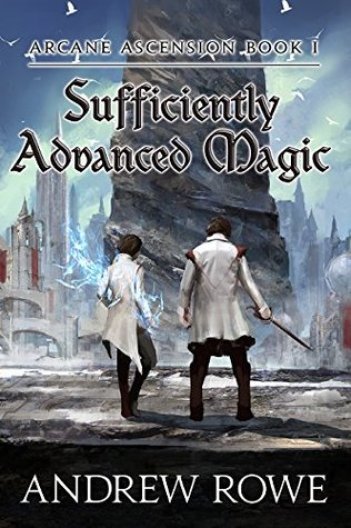
Five years ago, Corin Cadence’s brother entered the Serpent Spire — a colossal tower with ever-shifting rooms, traps, and monsters. Those who survive the spire’s trials return home with an attunement: a mark granting the bearer magical powers. According to legend, those few who reach the top of the tower will be granted a boon by the spire’s goddess.
He never returned.
Now, it’s Corin’s turn. He’s headed to the top floor, on a mission to meet the goddess.
If he can survive the trials, Corin will earn an attunement, but that won’t be sufficient to survive the dangers on the upper levels. For that, he’s going to need training, allies, and a lot of ingenuity.
The journey won’t be easy, but Corin won’t stop until he gets his brother back.
link to purchase
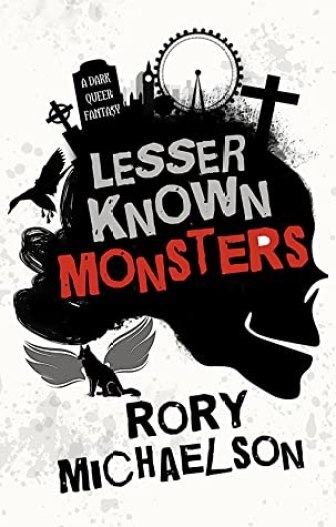
Being the chosen one isn’t always a good thing.
Oscar Tundale is useless, or at least that’s what he’s always thought. He and his friends are about to discover that not only are monsters real, but some of them are very interested in Oscar. Now, they must find out what the monsters want, before something terrible happens to London; or worse yet, the world.
Lesser Known Monsters is an own voices queer dark fantasy featuring diverse characters on a found family adventure. Perfect for fans of action and paranormal romance seeking LGBTQ+ heroes.
link to purchase
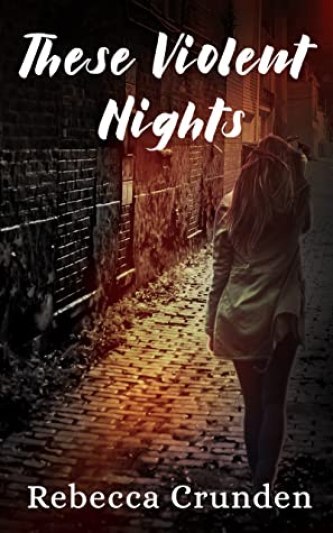
Once upon a time, inhabitants of another world tore a hole through the universe and came to Earth. They called themselves Suriias, and rivalled humans in knowledge and skill with one great exception: they had magic.
War followed. Humanity lost. And three hundred years later, humans are on the brink of extinction.
Orphans Thorn and Thistle live in hiding. They are the last of their families, the last of their friends. They scrape by, stealing to survive and living on the streets or hiding in sheds. But even under the brutal regime of the Suriias, there are places where humans can mingle in secret with magical sympathisers, and one night Thistle gets an unexpected offer of marriage from a Suriia with high standing and friends in all the right places. For Thistle, it’s a chance at safety and comfort; for Thorn, it’s a chance to find the ones who killed her parents.
And so the pair move into the capital city of Courtenz. An urban monstrosity of magic and might, false friends and flying cars, drones and death tolls, the new city promises a fresh start – and new love – for both.
But if there’s one thing Thorn knows for certain, it’s that dreams can swiftly turn into nightmares.
Once upon a time, inhabitants of another world tore a hole through the universe and came to Earth. They called themselves Suriias, and rivalled humans in knowledge and skill with one great exception: they had magic.
War followed. Humanity lost. And three hundred years later, humans are on the brink of extinction.
Orphans Thorn and Thistle live in hiding. They are the last of their families, the last of their friends. They scrape by, stealing to survive and living on the streets or hiding in sheds. But even under the brutal regime of the Suriias, there are places where humans can mingle in secret with magical sympathisers, and one night Thistle gets an unexpected offer of marriage from a Suriia with high standing and friends in all the right places. For Thistle, it’s a chance at safety and comfort; for Thorn, it’s a chance to find the ones who killed her parents.
And so the pair move into the capital city of Courtenz. An urban monstrosity of magic and might, false friends and flying cars, drones and death tolls, the new city promises a fresh start – and new love – for both.
But if there’s one thing Thorn knows for certain, it’s that dreams can swiftly turn into nightmares.
link to purchase
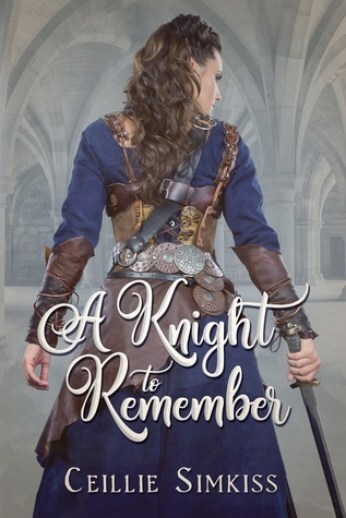
Ser Genevieve, lady knight and heir to the Duchy of Teagan, has been chosen as part of the prince’s honor guard at his coming out ball – a high honor for a woman who’s only been a full fledged knight for a year. The ball is an opportunity for Genevieve to make a name for herself with a functional chainmail dress of her own design, and maybe a chance for her to properly get to know Duke Avery of Wolvington, a man she’s had a quiet crush on for years.
The paths of a gentle blacksmith, a know-it-all nonbinary tailor, and Genevieve’s talented witch of a younger sister cross in their determination to make Ser Genevieve a knight to remember.
Once upon a time, inhabitants of another world tore a hole through the universe and came to Earth. They called themselves Suriias, and rivalled humans in knowledge and skill with one great exception: they had magic.
War followed. Humanity lost. And three hundred years later, humans are on the brink of extinction.
Orphans Thorn and Thistle live in hiding. They are the last of their families, the last of their friends. They scrape by, stealing to survive and living on the streets or hiding in sheds. But even under the brutal regime of the Suriias, there are places where humans can mingle in secret with magical sympathisers, and one night Thistle gets an unexpected offer of marriage from a Suriia with high standing and friends in all the right places. For Thistle, it’s a chance at safety and comfort; for Thorn, it’s a chance to find the ones who killed her parents.
And so the pair move into the capital city of Courtenz. An urban monstrosity of magic and might, false friends and flying cars, drones and death tolls, the new city promises a fresh start – and new love – for both.
But if there’s one thing Thorn knows for certain, it’s that dreams can swiftly turn into nightmares.
link to purchase

Princess Valerie, a strong-willed 19-year-old with curious magic powers, finally gets to see her best-friend-turned-fiance Eliot again. However, a mystifying sorceress kidnaps Eliot and pleads her to forget about him for the good of everyone. As the only suspect in his disappearance, Valerie must abandon the safety of her royal life to rescue him herself. Her friend and bodyguard Luce joins her as the only person who believes her. The two women set out to uncover the dark secrets behind Eliot’s disappearance and end up on a journey of self-discovery and acceptance.
“The Light in Front of Me” is an LGBT fantasy about being true to yourself and overcoming odds together. It’s an adventure full of intense swordfights, heart-felt confessions, dragons, and an adorable fox who doesn’t quite get humans.
Once upon a time, inhabitants of another world tore a hole through the universe and came to Earth. They called themselves Suriias, and rivalled humans in knowledge and skill with one great exception: they had magic.
War followed. Humanity lost. And three hundred years later, humans are on the brink of extinction.
Orphans Thorn and Thistle live in hiding. They are the last of their families, the last of their friends. They scrape by, stealing to survive and living on the streets or hiding in sheds. But even under the brutal regime of the Suriias, there are places where humans can mingle in secret with magical sympathisers, and one night Thistle gets an unexpected offer of marriage from a Suriia with high standing and friends in all the right places. For Thistle, it’s a chance at safety and comfort; for Thorn, it’s a chance to find the ones who killed her parents.
And so the pair move into the capital city of Courtenz. An urban monstrosity of magic and might, false friends and flying cars, drones and death tolls, the new city promises a fresh start – and new love – for both.
But if there’s one thing Thorn knows for certain, it’s that dreams can swiftly turn into nightmares.
link to purchase

Follow the law and you’ll stay safe. But what if the law is wrong?
Tashué’s faith in the law is beginning to crack.
Three years ago, he stood by when the Authority condemned Jason to the brutality of the Rift for non-compliance. When Tashué’s son refused to register as tainted, the laws had to be upheld. He’d never doubted his job as a Regulation Officer before, but three years of watching your son wither away can break down even the strongest convictions.
Then a dead girl washed up on the bank of the Brightwash, tattooed and mutilated. Where had she come from? Who would tattoo a child? Was it the same person who killed her?
Why was he the only one who cared?
Will Tashué be able to stand against everything he thought he believed in to get the answers he’s looking for?
Click to PurchaseThe post 33 Books With LGBTQIAP+ Representation to Add to Your TBR appeared first on BEFOREWEGOBLOG.
#SPFBO8 Review – The Seventh Cadence by Jim Wilbourne

Slow-burn of a novel with interesting characters, high stakes, beautiful world-building, and compelling power structures
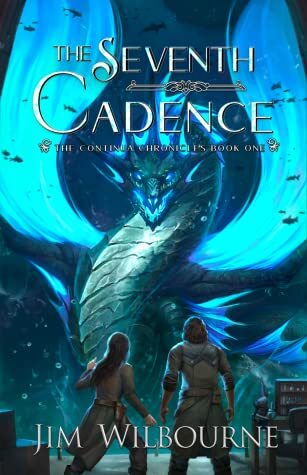 The wyrmy cover and title of Jim Wilbourne’s The Seventh Cadence made me think this book was going to be about rhythmically gifted dragons. Spoiler alert: It is not.
The wyrmy cover and title of Jim Wilbourne’s The Seventh Cadence made me think this book was going to be about rhythmically gifted dragons. Spoiler alert: It is not.
Told in the third person, The Seventh Cadence is a slow-burn of a novel with interesting characters, high stakes, beautiful world-building, and compelling power structures. Each of the primaries is the heir to the pinnacles of some kind of power – whether that power resides on a throne, in a book, or in magic. I could have read entire books about any of them individually. The author weaves their stories into one massive narrative while keeping most of them apart and unaware of events elsewhere. This technique made it challenging at times to keep up with who was doing what and where. The plot drags in some places, barrels ahead in others, and I’m still a bit unsure what the seventh cadence actually is.
All that said, there are moments and ideas which truly shine but at nearly 700 pages, sometimes the brilliant beats are spaced too far apart
This is a cut of The Seventh Cadence.
Read The Seventh Cadence by Jim Wilbourne
The post #SPFBO8 Review – The Seventh Cadence by Jim Wilbourne appeared first on BEFOREWEGOBLOG.
June 2, 2022
22 Books With LGBTQIAP+ Representation to Add to Your TBR
Representation in the SFF was pretty much non-existent in my childhood; the only ones I knew about were the one-off books such as The Left Hand of Darkness that questioned what gender was and its fluidity. Even then, this was not a concept I learned about in school, though I was an avid reader. Times seem to be changing, new stories are being told. It is about damn time.
This list is by no means perfect, and I am always looking for better books to add to it. However, through my research over the last few months, reaching out to the community on Twitter and other social media sites, these are outstanding books that offer great representation. Might be some new titles to add to your TBR that you might not have heard of.
So kick back, and scan the list. Maybe some new favorites will pop out to check out. Perhaps, there are some classics here that deserve a reread. Happy Pride Month to the LGBTQIAP+ community!
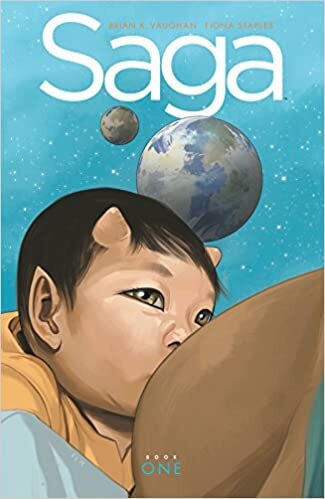
Collecting the first 18 issues of the smash-hit series, this massive edition features a striking new cover, as well as special extras, including never-before-seen sketches, script pages, and a roundtable discussion with the creators about how SAGA is really made. Altogether, this hardcover contains over 500 pages for less than fifty bucks! Written by Eisner Award-winning “Best Writer” BRIAN K. VAUGHAN (Y: The Last Man, The Private Eye) and drawn by Harvey Award-winning “Best Artist” Fiona Staples (Mystery Society, North 40), SAGA is the story of Hazel, a child born to star-crossed parents from opposite sides of a never-ending galactic war. Now, Hazel’s fugitive family must risk everything to find a peaceful future in a harsh universe that values destruction over creation. Fantasy and science fiction are wed like never before in a sexy, subversive drama for adults that Entertainment Weekly called, “The kind of comic you get when truly talented superstar creators are given the freedom to produce their dream book.”
Link To Purchase
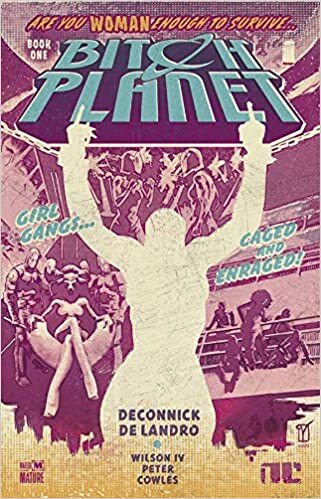
Eisner Award-nominated writer Kelly Sue DeConnick (Pretty Deadly, Captain Marvel) and Valentine De Landro (X-Factor) team up to bring you the premiere volume of Bitch Planet, a deliciously vicious riff on women-in-prison sci-fi exploitation.
In a future just a few years down the road in the wrong direction, a woman’s failure to comply with her patriarchal overlords will result in exile to the meanest penal planet in the galaxy. When the newest crop of fresh femmes arrive, can they work together to stay alive or will hidden agendas, crooked guards, and the deadliest sport on (or off!) Earth take them to their maker?
link to purchase
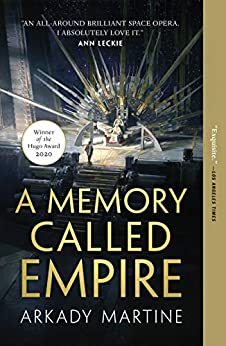
Ambassador Mahit Dzmare arrives in the center of the multi-system Teixcalaanli Empire only to discover that her predecessor, the previous ambassador from their small but fiercely independent mining Station, has died. But no one will admit that his death wasn’t an accident—or that Mahit might be next to die, during a time of political instability in the highest echelons of the imperial court.
Now, Mahit must discover who is behind the murder, rescue herself, and save her Station from Teixcalaan’s unceasing expansion—all while navigating an alien culture that is all too seductive, engaging in intrigues of her own, and hiding a deadly technological secret—one that might spell the end of her Station and her way of life—or rescue it from annihilation.
A fascinating space opera debut novel, Arkady Martine’s A Memory Called Empire is an interstellar mystery adventure.
“The most thrilling ride ever. This book has everything I love.”
—Charlie Jane Anders, author of All the Birds in the Sky
And coming soon, the brilliant sequel, A Desolation Called Peace!
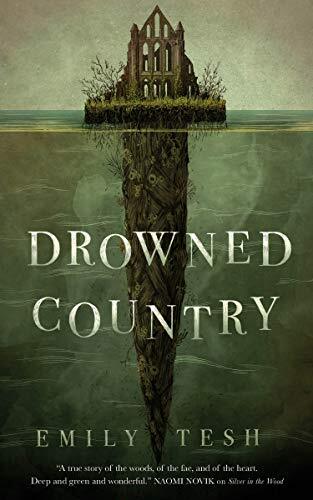
The conclusion to the World Fantasy Award-winning Greenhollow Duology
Drowned Country is the stunning sequel to Silver in the Wood, Emily Tesh’s lush, folkloric debut. This second volume of the Greenhollow duology once again invites readers to lose themselves in the story of Henry and Tobias, and the magic of a myth they’ve always known.
Even the Wild Man of Greenhollow can’t ignore a summons from his mother, when that mother is the indomitable Adela Silver, practical folklorist. Henry Silver does not relish what he’ll find in the grimy seaside town of Rothport, where once the ancient wood extended before it was drowned beneath the sea—a missing girl, a monster on the loose, or, worst of all, Tobias Finch, who loves him.
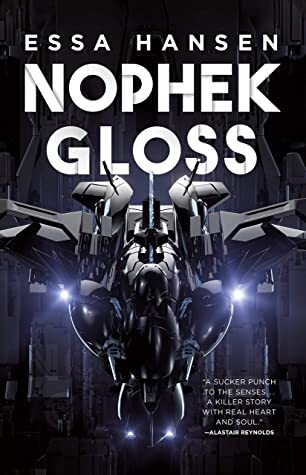
In this dark, dangerous, roller coaster of a debut, a young man sets out on a single-minded quest for revenge across a breathtaking multiverse filled with aliens, mind-bending tech, and ships beyond his wildest imagining. Essa Hanson’s is a bold new voice for the next generation of science fiction readers. Caiden’s planet is destroyed. His family is gone. And, his only hope for survival is a crew of misfit aliens and a mysterious ship that seems to have a soul and a universe of its own.
Link to Purchase
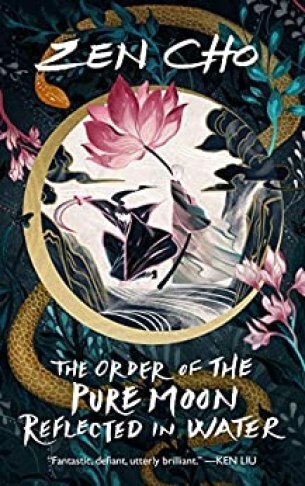
Zen Cho returns with The Order of the Pure Moon Reflected in Water, a found family wuxia fantasy that combines the vibrancy of old school martial arts movies with characters drawn from the margins of history.
A bandit walks into a coffeehouse, and it all goes downhill from there. Guet Imm, a young votary of the Order of the Pure Moon, joins up with an eclectic group of thieves (whether they like it or not) in order to protect a sacred object, and finds herself in a far more complicated situation than she could have ever imagined.
Review of The Order of the Pure Moon Reflected in Water by Zen Cho
Link to Purchase
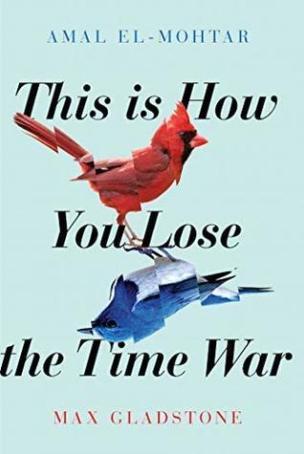
Among the ashes of a dying world, an agent of the Commandant finds a letter. It reads: Burn before reading. Thus begins an unlikely correspondence between two rival agents hellbent on securing the best possible future for their warring factions. Now, what began as a taunt, a battlefield boast, grows into something more. Something epic. Something romantic. Something that could change the past and the future.
Except the discovery of their bond would mean death for each of them. There’s still a war going on, after all. And someone has to win that war.
Review of This Is How You Lose the Time War by Amal El-Mohtar and Max Gladstone
Link to Purchase
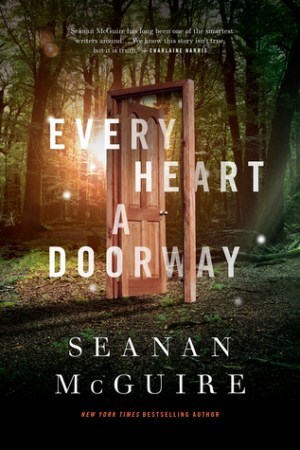
Eleanor West’s Home for Wayward Children
No Solicitations
No Visitors
No Quests
Children have always disappeared under the right conditions; slipping through the shadows under a bed or at the back of a wardrobe, tumbling down rabbit holes and into old wells, and emerging somewhere… else.
But magical lands have little need for used-up miracle children.
Nancy tumbled once, but now she’s back. The things she’s experienced… they change a person. The children under Miss West’s care understand all too well. And each of them is seeking a way back to their own fantasy world.
But Nancy’s arrival marks a change at the Home. There’s a darkness just around each corner, and when tragedy strikes, it’s up to Nancy and her new-found schoolmates to get to the heart of the matter.
No matter the cost.
Link to Purchase
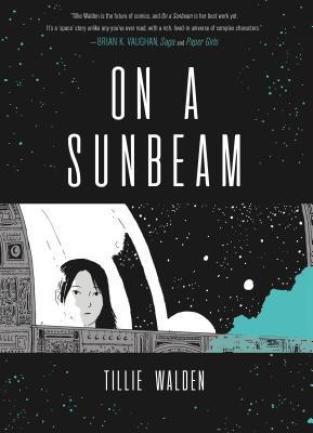
Throughout the deepest reaches of space, a crew rebuilds beautiful and broken-down structures, painstakingly putting the past together. As new member Mia gets to know her team, the story flashes back to her pivotal year in boarding school, where she fell in love with a mysterious new student. Soon, though, Mia reveals her true purpose for joining their ship—to track down her long-lost love.
An inventive world, a breathtaking love story, and stunning art come together in this new work by award-winning artist Tillie Walden
Link to Purchase
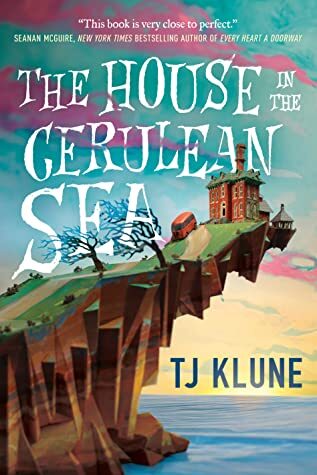
A magical island. A dangerous task. A burning secret.
Linus Baker leads a quiet, solitary life. At forty, he lives in a tiny house with a devious cat and his old records. As a Case Worker at the Department in Charge Of Magical Youth, he spends his days overseeing the well-being of children in government-sanctioned orphanages.
When Linus is unexpectedly summoned by Extremely Upper Management he’s given a curious and highly classified assignment: travel to Marsyas Island Orphanage, where six dangerous children reside: a gnome, a sprite, a wyvern, an unidentifiable green blob, a were-Pomeranian, and the Antichrist. Linus must set aside his fears and determine whether or not they’re likely to bring about the end of days.
But the children aren’t the only secret the island keeps. Their caretaker is the charming and enigmatic Arthur Parnassus, who will do anything to keep his wards safe. As Arthur and Linus grow closer, long-held secrets are exposed, and Linus must make a choice: destroy a home or watch the world burn.
An enchanting story, masterfully told, The House in the Cerulean Sea is about the profound experience of discovering an unlikely family in an unexpected place—and realizing that family is yours.
Link to Purchase

Nebula, Locus, and Alex Award-winner P. Djèlí Clark returns to his popular alternate Cairo universe for his fantasy novel debut, A Master of Djinn
Cairo, 1912: Though Fatma el-Sha’arawi is the youngest woman working for the Ministry of Alchemy, Enchantments and Supernatural Entities, she’s certainly not a rookie, especially after preventing the destruction of the universe last summer.
So when someone murders a secret brotherhood dedicated to one of the most famous men in history, al-Jahiz, Agent Fatma is called onto the case. Al-Jahiz transformed the world 50 years ago when he opened up the veil between the magical and mundane realms, before vanishing into the unknown. This murderer claims to be al-Jahiz, returned to condemn the modern age for its social oppressions. His dangerous magical abilities instigate unrest in the streets of Cairo that threaten to spill over onto the global stage.
Alongside her Ministry colleagues and her clever girlfriend Siti, Agent Fatma must unravel the mystery behind this imposter to restore peace to the city – or face the possibility he could be exactly who he seems….
Review of A Master of Djinn by P. Djèlí Clark
Link to Purchase
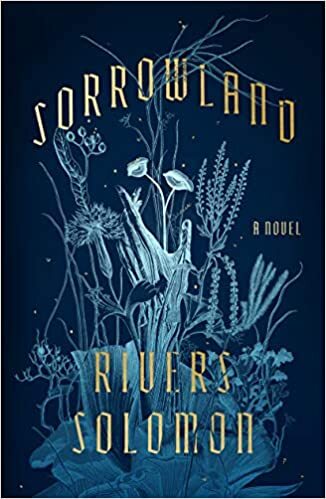
Vern – seven months pregnant and desperate to escape the strict religious compound where she was raised – flees for the shelter of the woods. There, she gives birth to twins, and plans to raise them far from the influence of the outside world.
But even in the forest, Vern is a hunted woman. Forced to fight back against the community that refuses to let her go, she unleashes incredible brutality far beyond what a person should be capable of, her body wracked by inexplicable and uncanny changes.
To understand her metamorphosis and to protect her small family, Vern has to face the past, and more troublingly, the future – outside the woods. Finding the truth will mean uncovering the secrets of the compound she fled but also the violent history in America that produced it.
Link to Purchase

Immigrant. Socialite. Magician.
Jordan Baker grows up in the most rarefied circles of 1920s American society—she has money, education, a killer golf handicap, and invitations to some of the most exclusive parties of the Jazz Age. She’s also queer, Asian, adopted, and treated as an exotic attraction by her peers, while the most important doors remain closed to her.
But the world is full of wonders: infernal pacts and dazzling illusions, lost ghosts and elemental mysteries. In all paper is fire, and Jordan can burn the cut paper heart out of a man. She just has to learn how.
Nghi Vo’s debut novel The Chosen and the Beautiful reinvents this classic of the American canon as a coming-of-age story full of magic, mystery, and glittering excess, and introduces a major new literary voice.
Link to Purchase
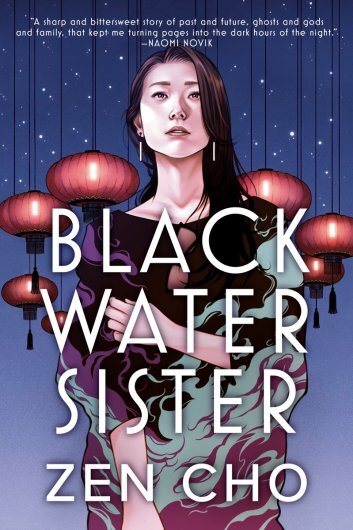
A reluctant medium discovers the ties that bind can unleash a dangerous power in this compelling Malaysian-set contemporary fantasy.
Jessamyn Teoh is closeted, broke and moving back to Malaysia, a country she left when she was a toddler. So when Jess starts hearing voices, she chalks it up to stress. But there’s only one voice in her head, and it claims to be the ghost of her estranged grandmother, Ah Ma. In life Ah Ma was a spirit medium, the avatar of a mysterious deity called the Black Water Sister. Now she’s determined to settle a score against a gang boss who has offended the god–and she’s decided Jess is going to help her do it.
Drawn into a world of gods, ghosts, and family secrets, Jess finds that making deals with capricious spirits is a dangerous business. As Jess fights for retribution for Ah Ma, she’ll also need to regain control of her body and destiny. If she fails, the Black Water Sister may finish her off for good.
Link to Purchase
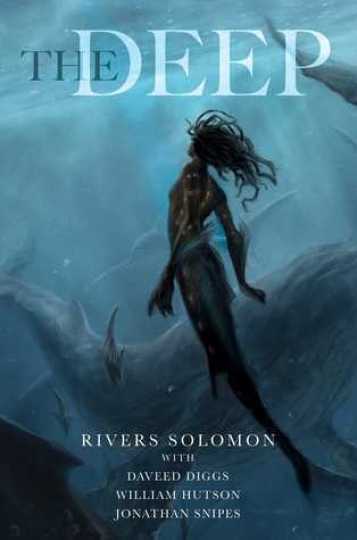
The water-breathing descendants of African slave women tossed overboard have built their own underwater society—and must reclaim the memories of their past to shape their future in this brilliantly imaginative novella inspired by the Hugo Award nominated song “The Deep” from Daveed Diggs’ rap group Clipping.
Yetu holds the memories for her people—water-dwelling descendants of pregnant African slave women thrown overboard by slave owners—who live idyllic lives in the deep. Their past, too traumatic to be remembered regularly, is forgotten by everyone, save one—the historian. This demanding role has been bestowed on Yetu.
Yetu remembers for everyone, and the memories, painful and wonderful, traumatic and terrible and miraculous, are destroying her. And so, she flees to the surface, escaping the memories, the expectations, and the responsibilities—and discovers a world her people left behind long ago.
Yetu will learn more than she ever expected to about her own past—and about the future of her people. If they are all to survive, they’ll need to reclaim the memories, reclaim their identity—and own who they really are.
Inspired by a song produced by the rap group Clipping for the This American Life episode “We Are In The Future,” The Deep is vividly original and uniquely affecting.
Link to Purchase
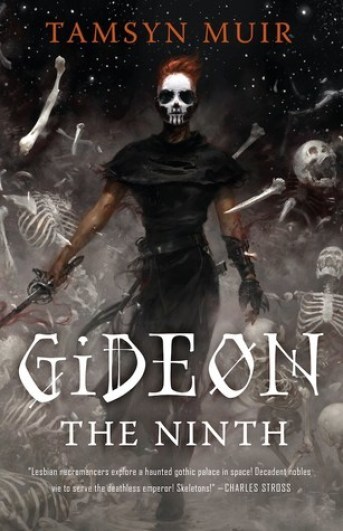
The Emperor needs necromancers.
The Ninth Necromancer needs a swordswoman.
Gideon has a sword, some dirty magazines, and no more time for undead bullshit.
Brought up by unfriendly, ossifying nuns, ancient retainers, and countless skeletons, Gideon is ready to abandon a life of servitude and an afterlife as a reanimated corpse. She packs up her sword, her shoes, and her dirty magazines, and prepares to launch her daring escape. But her childhood nemesis won’t set her free without a service.
Harrowhark Nonagesimus, Reverend Daughter of the Ninth House and bone witch extraordinaire, has been summoned into action. The Emperor has invited the heirs to each of his loyal Houses to a deadly trial of wits and skill. If Harrowhark succeeds she will become an immortal, all-powerful servant of the Resurrection, but no necromancer can ascend without their cavalier. Without Gideon’s sword, Harrow will fail, and the Ninth House will die.
Of course, some things are better left dead.
Link to Purchase
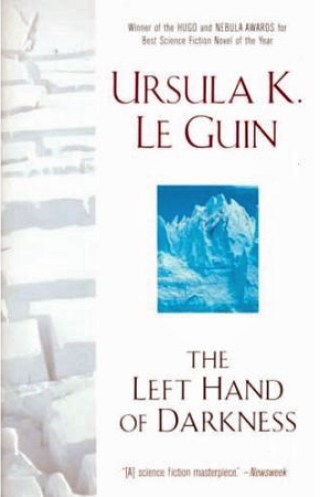
A groundbreaking work of science fiction, The Left Hand of Darkness tells the story of a lone human emissary to Winter, an alien world whose inhabitants can choose – and change – their gender. His goal is to facilitate Winter’s inclusion in a growing intergalactic civilization. But to do so he must bridge the gulf between his own views and those of the completely dissimilar culture that he encounters.
Embracing the aspects of psychology, society, and human emotion on an alien world, The Left Hand of Darkness stands as a landmark achievement in the annals of intellectual science fiction
Link To Purchase
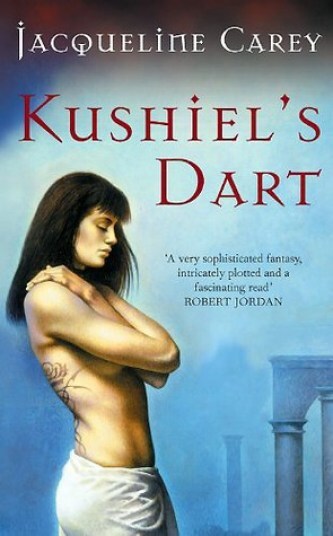
The land of Terre d’Ange is a place of unsurpassing beauty and grace. It is said that angels found the land and saw it was good… and the ensuing race that rose from the seed of angels and men live by one simple rule: Love as thou wilt.
Phèdre nó Delaunay is a young woman who was born with a scarlet mote in her left eye. Sold into indentured servitude as a child, her bond is purchased by Anafiel Delaunay, a nobleman with very a special mission… and the first one to recognize who and what she is: one pricked by Kushiel’s Dart, chosen to forever experience pain and pleasure as one.
Phèdre is trained equally in the courtly arts and the talents of the bedchamber, but, above all, the ability to observe, remember, and analyze. Almost as talented a spy as she is courtesan, Phèdre stumbles upon a plot that threatens the very foundations of her homeland. Treachery sets her on her path; love and honor goad her further. And in the doing, it will take her to the edge of despair… and beyond. Hateful friend, loving enemy, beloved assassin; they can all wear the same glittering mask in this world, and Phèdre will get but one chance to save all that she holds dear.
Set in a world of cunning poets, deadly courtiers, heroic traitors, and a truly Machiavellian villainess, this is a novel of grandeur, luxuriance, sacrifice, betrayal, and deeply laid conspiracies. Not since Dune has there been an epic on the scale of Kushiel’s Dart-a massive tale about the violent death of an old age, and the birth of a new.
See our review
link to purchase

The Tensorate Series, which has been nominated for the Hugo, Nebula, World Fantasy, Locus, and Lambda Literary Awards, is an incomparable treasure of modern epic fantasy.
Across four novellas, Neon Yang established themself as a fantasist in bold defiance of the limitations of their genre. Available now in a single volume, these four novellas trace the generational decline of an empire and unfurl a world that is rich and strange beyond anything you’ve dreamed.
In the Tensorate Series you will find: rebellious nonbinary scions of empire, sky-spanning nagas with experimental souls, revolutionary engineers bent on bringing power to the people, pugilist monks, packs of loyal raptors, and much, much more.
The Tensorate Series omnibus contains The Black Tides of Heaven, The Red Threads of Fortune, The Descent of Monsters, and To Ascend to Godhood
link to purchase

This is the way the world ends. Again.
Three terrible things happen in a single day. Essun, a woman living an ordinary life in a small town, comes home to find that her husband has brutally murdered their son and kidnapped their daughter. Meanwhile, mighty Sanze — the world-spanning empire whose innovations have been civilization’s bedrock for a thousand years — collapses as most of its citizens are murdered to serve a madman’s vengeance. And worst of all, across the heart of the vast continent known as the Stillness, a great red rift has been torn into the heart of the earth, spewing ash enough to darken the sky for years. Or centuries.
Now Essun must pursue the wreckage of her family through a deadly, dying land. Without sunlight, clean water, or arable land, and with limited stockpiles of supplies, there will be war all across the Stillness: a battle royale of nations not for power or territory, but simply for the basic resources necessary to get through the long dark night. Essun does not care if the world falls apart around her. She’ll break it herself, if she must, to save her daughter.
link to purchase
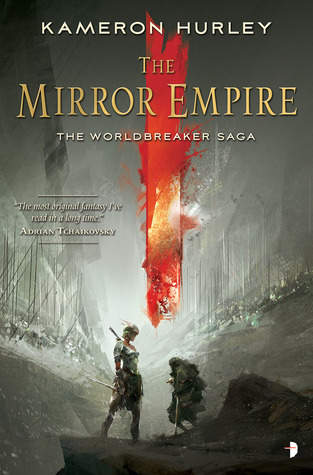
On the eve of a recurring catastrophic event known to extinguish nations and reshape continents, a troubled orphan evades death and slavery to uncover her own bloody past… while a world goes to war with itself.
In the frozen kingdom of Saiduan, invaders from another realm are decimating whole cities, leaving behind nothing but ash and ruin.
As the dark star of the cataclysm rises, an illegitimate ruler is tasked with holding together a country fractured by civil war, a precocious young fighter is asked to betray his family and a half-Dhai general must choose between the eradication of her father’s people or loyalty to her alien Empress.
Through tense alliances and devastating betrayal, the Dhai and their allies attempt to hold against a seemingly unstoppable force as enemy nations prepare for a coming together of worlds as old as the universe itself.
In the end, one world will rise – and many will perish.
link to purchase

A landmark work by a brilliant young author, THE SALT ROADS transports readers across centuries and civilizations as it fearlessly explores the relationships women have with their lovers, their people, and the divine. Jeanne Duval, the ginger-colored entertainer, struggles with her lover poet Charles Baudelaire…Mer, plantation slave and doctor, both hungers for and dreads liberation…and Thais, a dark-skinned beauty from Alexandria, is impelled to seek a glorious revelation-as Ezili, a being born of hope, unites them all. Interweaving acts of brutality with passionate unions of spirit and flesh, this is a narrative that shocks, entertains, and dazzles-from an award-winning writer who dares to redefine the art of storytelling.
A Nebula Award nominee — A Locus Magazine recommended book
link to purchaseThe post 22 Books With LGBTQIAP+ Representation to Add to Your TBR appeared first on BEFOREWEGOBLOG.
SPFBO 8 Review – THE GATHERERS AND THE ILLNESS OF THE ISLE by Alex J. Eiseman
 The Gatherers and The Illness of the Isle” is a recommended read, I will be picking up the next book in “The Tales of the Gatherers” series.I have provided an honest review of this book below for purposes of the Self-Published Fantasy Blog-Off (SPFBO) Number 8 competition in which this book is entered, and assigned to Before We Go Blog for judging.
The Gatherers and The Illness of the Isle” is a recommended read, I will be picking up the next book in “The Tales of the Gatherers” series.I have provided an honest review of this book below for purposes of the Self-Published Fantasy Blog-Off (SPFBO) Number 8 competition in which this book is entered, and assigned to Before We Go Blog for judging.
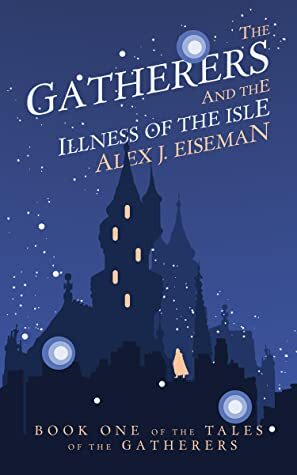 For my first read as an SPFBO 8 Judge, I selected “The Gatherers and The Illness of the Isle” by Alex J. Eiseman. I was intrigued by the back cover blurb, specifically because of themes of inequitable wealth distribution, privilege, and a revolutionary group attempting to change the class system. That type of subject matter will always be extremely interesting to me, and after checking the title out on Goodreads, seeing the professional cover and presentation, I elected to purchase the book, figuring this is one I would want for my shelves.
For my first read as an SPFBO 8 Judge, I selected “The Gatherers and The Illness of the Isle” by Alex J. Eiseman. I was intrigued by the back cover blurb, specifically because of themes of inequitable wealth distribution, privilege, and a revolutionary group attempting to change the class system. That type of subject matter will always be extremely interesting to me, and after checking the title out on Goodreads, seeing the professional cover and presentation, I elected to purchase the book, figuring this is one I would want for my shelves.
True to its promise of compelling themes, the book is centered around the world of Aeris where a serf-like class eke out a meagre existence, sifting through the sands of the desert for subsistence, collecting shells for the wealthy members of society, during the day. Then, this downtrodden class of society must try to survive the horror of each nighttime, as they are callously left largely unprotected and vulnerable by their rich masters, as monsters – called the Vayle – that roam the darkness prey on the unfortunate labourers. It’s a terrible, oppressively bleak, and usually short lifestyle. Meanwhile the wealthy who keep the destitute in line, have complete disdain for the poor, and act only in self-interest, as they manipulate the lower class via their control of the military, and also how they parse out immersia (a magic that can combat the Vayle) to the less fortunate. Enter the Gatherers, a determined underground revolutionary group that has risen to attempt to free the oppressed, destroy the Vayle, and usher in a new era of equality for all people in Aeris. Any discussion of a book’s merits for me will always begin with the characters. The protagonist and “chosen one”, Aselle, is one that I liked. I very much appreciated Eiseman’s portrayal of Aselle in that she earned her knowledge through intense study, and does not simply magically come by all her talents. The wise and noble mentor, Sabell, will draw immediate comparisons to Obi-Wan Kenobi, but readers will appreciate the complexity to the character that Eiseman has added beyond all-knowing sensei. To be clear, there are numerous characters in the book that will capture the reader’s attention, including Novae, Canis, Ursa, and Ezra. Eiseman’s characters are well-drawn, complicated, and realistic. Ezra in particular stole the show for me, in terms of my favourite player. His arc, including commentary, with his cynicism about life and the affairs of state in Aeris provided some of the book’s best moments, as we see him rise from essentially middle-management bureaucracy to a key player in the events that unfold. Eiseman’s prose was great, and there were some real gems that I found in the storytelling, my favourite of which I will add here: “…Many souls will hurt you over the course of your life. Even those you love may hurt you. So many souls make a habit of ignoring their pain, of saying all is well. Don’t ignore the pain; embrace it and reconcile it. Furthermore, don’t ever think you’re deserving of the pain that others inflict upon you. No soul deserves it. It’s only inflicted by others who suffer pain themselves.” As noted, the themes in the book really kept me absorbed, reading about the class struggle, as those in power do everything they can to hold onto it, uncaring or oblivious to its effects on others. The elements of fanaticism, racism, shadism, propaganda, revolution, and might versus right, were all very well-handled by Eiseman in the book. The world-building in the book is exceptional. It’s utterly immersive. From religion, to invented language, to history, Eiseman has obviously built an extremely detailed, well-thought-out, and fascinating world. The author has also created online resources that the reader can search, which include a dictionary and history of Aeris. The magic system, with “The Voice” controlling the land, the terrifying Vayle stalking the night, and the political machinations kept me moving forward through this slow-burn fantasy. I truly wanted to lose myself in the world that Eiseman has created, and learn even more about it. I highly commend the author for his clear efforts – as stated in his foreword – to build, in his own words, an “organic and dense” world. That said, I believe a glossary, list of character names, and map included right in the book, would have made the incredible world-building much easier to grasp, and keep the reader engaged, rather than having to try to refer to the online resources. Furthermore, while the amazing worldbuilding and the effort to use as little exposition as possible is laudable, it did leave me as the reader somewhat dazed and confused at numerous junctures in the novel, and sometimes took me out of the lovely prose and diverting story. Sadly, it was this struggle with being able to readily access the narrative at times that led me to not moving this book forward in the competition. Irrespective of this, overall I very much enjoyed this book, and the fabulous world-building, engrossing themes, and political intrigue in a dystopian setting will make fans of “Dune” by the illustrious Frank Herbert feel right at home. “The Gatherers and The Illness of the Isle” is a recommended read, I will definitely be picking up the next book in “The Tales of the Gatherers” series. If I consider a book a five-star read, those are the books I will be recommending to be put forward for advancement to the next round of SPFBO. For “The Gatherers and The Illness of the Isle,” my score is 3.75, rounded up to 4 out of 5 stars. Read The Gatherers and the Illness of the Isle
The post SPFBO 8 Review – THE GATHERERS AND THE ILLNESS OF THE ISLE by Alex J. Eiseman appeared first on BEFOREWEGOBLOG.
Interview with Author Rachel Aaron
Last month I devoured Heartstrikers and when I say devoured, I was practically finishing one chunky book in that wonderful series every other day. I still look back on the original characters and excellent action and smile. It has been a long time since I have read a series that made me keep smiling a month after reading.
I am coming to understand that that is Rachel Aaron’s MO. Her books are engaging and fun. Ones readers will come back for second and third reads. This month Rachel is dropping the first book in a brand new series, The Last Stand of Mary Good Crow. There is already a huge amount of buzz about it. Rachel was kind enough to interview with me about her writing, self-publishing, and her newest book. Check it out!
 Hey Rachel, thank you so much for doing this interview with me!
Hey Rachel, thank you so much for doing this interview with me!My pleasure! Thank you for having me!
Firstly, for those who have not converted yet to the church of Bach and Aaron, can you tell us a bit about your writing?That’s a broad topic that I should probably self-reflect on more!
If you look at my backlist, you’ll see that I change genres a lot. I’ve written SciFi, Epic Fantasy, Urban Fantasy, and all kinds of other stuff piled on top. Back when I wrote for Orbit Books, my editor was constantly complaining that she couldn’t shelve my stuff properly because I was always writing stuff that didn’t fit neatly into bookstore categories, like hard action SciFi with a strong romance, or fast paces funny Epic Fantasy.
This is because writing for me has always been about doing what’s most interesting and fun. I’ve learned the hard way that I can’t write a book if I’m not personally invested in the story, and since my interests have jumped all over as I’ve learned and grown, so have my novels. This isn’t to say they aren’t connected. Every book I write is very much a Rachel Aaron book. I like big gutsy stories in complex secondary worlds with loveable characters I want to spend time with. I like writing funny people in very serious situation. I love drama and high stakes and impossible odds. My stories are always larger than life, but always have happy endings.
That’s my genre: big dramatic rides with loveable people! Whether that happens with dragons or space ships changes depending on what flavor best fits the story I want to tell, but it’s always going to be my book. I think that’s why my fans have followed me through so many genres. If you like the Rachel Aaron flavor, that’s what you’re going to get no matter what category I appear under.
You go by two names, Rachel Aaron and Rachel Bach. Why the two names, and how did you select them?Rachel Bach was given to me by my publisher early in my career when I jumped from Epic Fantasy with my first series, THE LEGEND OF ELI MONPRESS, to hard SciFi Romance with my second, PARADOX. My editor, quite rightly, thought that it’d be bad for my brand to have two such wildly different types of books under one name. We didn’t know back then that I would become such a wild genre rebel, so I agreed to become Rachel Bach for SciFi and Rachel Aaron for Fantasy.
Annnnnd then I never wrote another SciFi, or another Epic Fantasy! I wrote Urban Fantasy and an Anime Tie-In novel for ATTACK ON TITAN, and now Historical Fantasy. I was a publicist’s nightmare! Utterly unmarketable. It would have been so much better for my career if I could have just stuck with one genre, because I’m sure I have readers who loved my Urban Fantasy HEARTSTRIKERS series but don’t care about Westerns. But like I said, I had to write what I loved, so here we are.
I’m just glad I escaped with only two pen names!
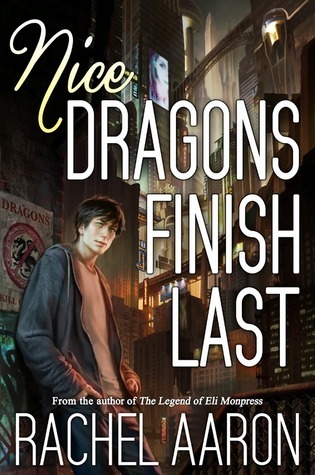 Does having a different name give you a different mindset for writing?
Does having a different name give you a different mindset for writing?Not really. Like I said, I write whatever I think is the coolest and most amazing. My mindset does change according to the sort of story I’m writing, though. THE LAST STAND OF MARY GOOD CROW has a much more serious and realistic setting than the world I made for my dragon books. Because of the nature of writing something set in an actual time period, I had to go into subjects that are much heavier than I’m used to, like racism and genocide.
This isn’t to say it’s a dark book—I don’t write those, not my style—but it is more serious than anything I’ve written before, and that required a change in approach. That’s a good thing, though! It was good for me to take on something with more teeth, and I’m very, very proud of the book that I got in the end.
Which genre do you gravitate to for personal enjoyment, and which ones do you enjoy writing the most in? You have written in romance, fantasy, urban, and science fiction. Or do you love jumping genres?Oh gosh, I jump all over! That’s probably why I switch genres so much, because I am absolutely omnivorous in my entertainment. I read Romance, History, SFF, YA, Non-Fiction, pretty much everything but non-Romantic contemporaries. I’m also a lifelong nerd who still watches tons of Anime, reads Manga, plays RPGs like whoa.
SciFi and Fantasy are definitely my favorites. I find it harder to get interested in stories that don’t have “in space” or “with magic” somewhere in the description, but I’ll latch onto anything that gives me a good story! For example, I’m not a big musicals person, but my favorite movie of last year was ENCANTO. I didn’t actually watch it until it came on Disney+ because I don’t typically go for generation family dramas, but once I gave it a chance, I was blown away by the incredible circular construction of the story. This is why I always try to give everything a shot, because as Uncle Iroh says, it is important to draw wisdom from many sources. Life is too short not to embrace all the good stories!
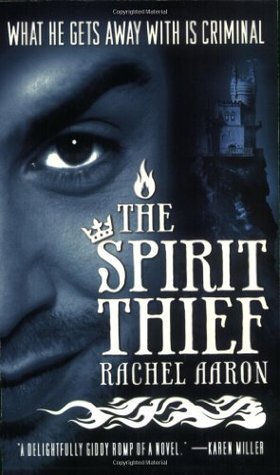 What drove your switch from traditional publishing to self-publishing? If I am correct, Eli Monpress was published by Orbit, while you published Heartstrikers.
What drove your switch from traditional publishing to self-publishing? If I am correct, Eli Monpress was published by Orbit, while you published Heartstrikers.Yes, and a lot of this has to do with my unshelvability. I loved working with Orbit, and my editor there, Devi Pillai (who’s now at Tor) is still the most editor I have ever worked with. But working with an editor means producing a reliable product, and I wasn’t so great at that. I loved experimenting and taking risks, and HEARTSTRIKERS was the biggest risk I’d ever taken at that point in my career. I mean, it was an Urban Fantasy set 100 years in the future in a magical cyberpunk version of Detroit. That was also a dragon family drama. With a beta-male main character. Who’s a pacifist.
Yeah, there is no bookstore shelf for that.
It basically came down to the fact that I was never going to be what traditional publishing wanted from me: a reliable producing product who stayed in her lane. It helped that all my self-publishing writer friends looked like they were having a lot more fun (and making a lot more money), so I made the jump and I’ve never once regretted it. I love having full control over my stories and how my books are marketed. I love being able to set my own publishing schedule, it just really suits my control-freak nature. Also, because self publishing pays so much better, I’ve been able to write the books I want to write instead of trying to write a best seller, which is an amazing freedom.
It’s definitely not for everyone. It can be really scary being solely responsible for whether a book flops or flies. But if you’re the kind of person who doesn’t like being told what you have write or when you have to write it and you like running your own business, it’s a really satisfying place to be.
What were some things you were surprised at by going self-published? Anything that you miss from the traditional publishing world?I really miss having an editor I didn’t hire. I’ve worked with a bunch of very good people, but there is nothing better for your growth as a writer than having an editor who says “this is wrong, you have to fix it” and then you have to fix it or the book doesn’t get published.
I know that goes directly against what I just said about hating people who tell me what to write, but I meant that more in terms of the genre and spirit of the piece. When it comes to actual text editing of a book, it’s very easy to get stuck on an idea that just isn’t working, and you need someone you can’t push around to make you see what you don’t want to see. I’ve worked very hard to get around this, and I think I’ve done okay, but there is no substitute for a good publishing house editor. They are the best in the world at what they do.
As for surprises from going self-pub, I’ve actually found it to be exactly like everybody said: tons of work, enough rope to hang yourself, but the money is great, and you get to be in control. That’s it in a nutshell, really.
The one thing I did learn that I don’t see talked about in the “how to self-pub” literature is how you have to take a long view on your career. When you start publishing your own stuff, there’s a ton of pressure to put out books as fast as possible because books equal income. Dear Reader, this is a trap. I’m a very fast writer, but I have very VERY high quality standards I hold myself to, because I’m building a career here.
I’m not putting out fast, sloppy books for fast, sloppy profits. I am building a brand. My whole goal from the beginning was to produce books that were identical in quality to my New York titles, because that’s what readers deserve. It’s your backlist that supports you as a fulltime writer, not new release, so make every book the absolute best book you can. Pay for editors and copy editing and proof reading and great covers. Create a quality product that will continue to sell even after you move on. That’s how you make a great career self-publishing that will continue to support you even if you’re not putting out a book every three months. Readers want good books, not fast books, and the best way to make a good living is to give your customers what they want.
I plowed through the Heartsrikers series this month, and I could not put them down. Who was your favorite dragon to write? They all have such defined personalities, was there a little bit of joy in writing each of them?I’m so glad you loved my dragon drama! HEARTSTRIKERS was actually one of the most difficult series I’ve ever written because it’s really hard having a pacifist main character. My PARADOX books were very simple in comparison because Devi could just shoot her problems. Julius had to make friends with them, which took a LOT more clever plotting.
Complaining aside, though, HEARTSTRIKERS has some of my favorite characters I’ve ever written. I love each and every one of their growly dragon faces, especially Bob. I actually go back and read those books sometimes just for the fun of hanging out with everybody again. Sometimes I’m worried I peaked with that series, but I’m always trying to find my next Great Seer of the Heartstrikers <3.
Amelia was such a wonderful character to read; I wanted to high-five her for being awesome and simultaneously hug her for all the hard things she had to do. How did you come up with her, is she based on anyone specifically?Amelia was one of those wonderful characters who was created to play a small role and quickly took over. I didn’t actually have a very big role planned for her at her introduction, but as soon as I started writing, I knew she was destined for greater things. This is part of what made writing HEARTSTRIKERS so hard! I got these amazing characters and then had to go change my plot to give them the roles they deserved!
She’s in my DFZ books also, by the way, so if you loved HEARTSTRIKERS, I heartily suggest giving MINIMUM WAGE MAGIC a try! It’s a fuuuuun series. I really, really loved writing it!
What interesting rabbit holes did you go down doing research for Heartstrikers? Are there any dragon myths you would love to write about in the future?I learned a lot more about Native American dragons than I ever thought I would! I would definitely like to do more with the Chinese dragons, but I’ve got to come up with a unique place to put them. I ran my dragon idea-well dry over 8 books!
You have said that “Patricia Wrede’s Enchanted Forest series was basically the inspiration for your writing voice.” How so?She has my absolute favorite writing style of rich world building, funny character and situations, but deadly serious plots. Her books are very funny, but they’re not Comedies. Likewise, they have wonderful romances, but they’re not Romances. Her plots are super fun, her voice is charming and whimsical without being twee or childish. I just think she’s amazing!
She’s also the writer who really made me think I could be a writer after reading her stuff. I used to go on long walks making up stories in my head that always sounded just like hers, and you can still see a lot of her style in my work. She was the bolt of lightning that started my writing fire, and I can’t thank her enough, honestly. Her stuff is amazing, go read it!
You have done a lot of collaborations with your husband for Forever Fantasy Online. How does your partnership work? Do you discuss the intricacies of each chapter? Or do you split it up?My husband Travis and I collaborate on every story. Pretty much all my good worldbuilding and magical system ideas were his first. We’re also both giant World of Warcraft players and have been since the game launched in 2004, so that’s a huge part of our lives. We also both loved the isekai/trapped in a game stories that were coming out all over and wanted a story like that but for our game, so FFO was the natural next step.
As for the writing itself, it was a bit of a gymnastics act passing the story between us. He’d write then I’d write and toss it back. It got really complicated at times, but Travis and I were both committed to producing the best product possible, so we got our egos out of the way and I think the finished product is amazing. It’s very much our story, and I love that.
You are releasing the first book of a new series this month, The Last Stand of Mary Good Crow. Can you tell us about this new story?Absolutely! This book is a perfect example of me having to write what I loved. Absolutely no one was asking for a grand scale historical western, but I had this idea and these characters that just wouldn’t quit. I actually tried to write other things because I do run a business, but at the end of the day, being a writer is about being an artist. This was the art I wanted to make, and nothing else felt right until I gave in and wrote it.
I like to call it an “Epic Fantasy of the West” because it’s a huge, sprawling story across hundreds of miles and multiple POVs. It’s got world changing magic, magic crystals, warring nations. If it was set in the land of Mon’Tania instead of Montana, it would be an Epic Fantasy. The historical aspect just adds another element that makes it even more interesting because this is what could have happened if magic was real, and I’m ALWAYS down with magic being real.
I know that’s pretty vague, but there’s not much I can say without spoiling the surprises I baked into the first book. All I can say is if the idea of the discovery of magic changing the course of the Great Sioux War sounds interesting at all to you, give it a try. It’s a whirlwind of a ride!
 The story is “Deadwood meets Lord of the Rings,” a fantastic mash-up. Did you always enjoy westerns?
The story is “Deadwood meets Lord of the Rings,” a fantastic mash-up. Did you always enjoy westerns?I’ve always been attracted to the genre in theory, but I find most actual Westerns to be too macho for my tastes, probably because they were written for men by men in the 50s and 60s. Modern Westerns are much better, but they’re still not quite what I wanted and tend to be VERY bleak, which is not my cup of tea.
I wanted a story that matched the fun and guns-out drama of the earlier Westerns without making me depressed like the modern ones did. I also wanted a chance to talk about the actual West, which was incredibly diverse and open-minded despite the prejudices of the time. It was very much a culture of “it’s not who’s gonna let me, it’s who’s gonna stop me,” both for good and for bad, and I found that absolutely fascinating. An incredibly interesting time in history that was just begging to have magic thrown into the mix!
How did you come up with the magic type for The Last Stand of Mary Good Crow?I wanted a magical system that both screamed fantasy and was analogous to the gold rush, so… magical crystals! Dangerous magical crystals that encourage reckless greed for maximum character drama.
That was the core idea. The rest of the system grew out of the characters and how I could best use magic to force them to grow into who they needed to be.
Can you tell me a bit about the women in this story? They all are such strong characters in the face of 1876 Montana. A time not known to be kind to women.Again, this was part of what attracted me so much to the Western setting. America in 1876 was a very difficult time for anyone who wasn’t a white, heterosexual, cis-gendered man, but the West had its own rules. People there were just as closed-minded as people anywhere else in the country, but they were also under a lot of pressure from the isolation and the hardships of the landscape. When you’re in a tiny mining town, and your only dry goods store is run by a black woman, you suddenly get a lot more open minded about women in business. That openmindedness might well snap closed again the moment there’s another option, but the actual history of the West is full of women and minorities doing things that would never have been allowed back East simply because they were the ones who went and did it, and there was no one out West to stop them.
That’s the dream of the West. The idea that you can just go out there and do anything, get rich, get land, make a new future that was never possible in your old life! That’s what these books are really about: that magic of the frontier. Also the tragedy and conflict that dream created for the people who already lived on the plains. There’s so much good in the dream of the West and so, so much bad, and the way it all piles together into a messy heap is what made this setting so attractive to me as a writer. I just loved it.
Lastly, what are you working on next?More Mary Good Crow! I just finished my final draft of the second book last week, and I’m about to being my big clean up edit, which hopefully means book 2 will be out this year!
The second book is where the rubber hits the road on a series. The first book is all fun new ideas, but book 2 is where all of those plans actually have to work, and I’m pleased to report I’m really, really happy with how the second book turned out! I think this is going to be an amazing series, and I can’t wait to write more of it!
Thank you so much for having me! I hope you’ll give THE LAST STAND OF MARY GOOD CROW a try when it comes out on June 1!
The post Interview with Author Rachel Aaron appeared first on BEFOREWEGOBLOG.
June 1, 2022
Review – Ghosts of Tomorrow by Michael Fletcher
Michael R. Fletcher remains one of the most underrated authors of fantasy today and I am continually impressed by his amazing achievements in terms of making stories which are both rich, well-characterized, and pardon my French but fucked up. He is one of the voices of independent grimdark and we are all the better for his work. Interestingly, my favorite of his works isn’t dark fantasy but something much more modern in the stylized hyper-violent GHOSTS OF TOMORROW.
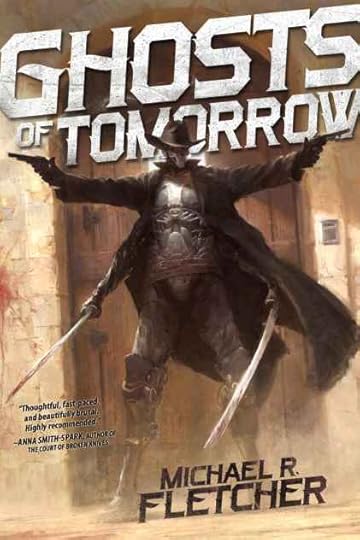 It is a cyberpunk shoot-em-up crime thriller with a samurai cowboy cyborg, a sentient tank, and an autistic girl goddess A.I.The books premise is the future is now dependent on Scans. Scans are a process where a human being’s consciousness is copied from their organic brains but, in the process, said brain is destroyed. Rather than result in countless humans wanting immortality, though it appeals to some, it’s created a trade in copied humans necessary to keep the hyper-technological future running. Scans are used for assassin-robots, running massive businesses, and more with there never being enough Scans to go around.
It is a cyberpunk shoot-em-up crime thriller with a samurai cowboy cyborg, a sentient tank, and an autistic girl goddess A.I.The books premise is the future is now dependent on Scans. Scans are a process where a human being’s consciousness is copied from their organic brains but, in the process, said brain is destroyed. Rather than result in countless humans wanting immortality, though it appeals to some, it’s created a trade in copied humans necessary to keep the hyper-technological future running. Scans are used for assassin-robots, running massive businesses, and more with there never being enough Scans to go around.
The solution is at once both believable and horrific with cartels forming to supply the need with children bought or stolen from their parents.This is mostly a metaphor for human trafficking in the real world with the demand having created a monstrous need which plenty of people will do their best to fulfill as long as its profitable. The fact our villains are the scum of the Earth doesn’t keep them from being humanized. Their evil is a function of their being human rather than a divergence from it. The boss of the cartels, for instance, treats his Scan child-soldiers with warmth as well as affection despite the fact they’re all people he’s murdered as well as would send to their deaths again.
The heroes are also, in proper grimdark fashion, just this side of psychotic themselves as they can’t see the horrors they’ve witnessed without being affected themselves. Griffin, the protagonist, loses a bit of his soul when his attempt to make a bust “properly” gets a bunch of children executed so their kidnappers can get away clean. He then becomes the kind of cowboy cop which exists in movies willing to do whatever it takes from torture or murder to stop the cartels–and really, who can blame him. His companion, Nadia, a reporter finds herself also affected as it’s clear the horror she wants to expose is at the base of the society she lives in.
I’m actually really fond of the child-characters in this book as well, which I never thought I would say about any of them in fiction. 88 is a girl who desperately wants to find her mother but may not even have ever had one. Archaeidae is a cyborg assassin who only a person who was raised by ultra-violent video games could take seriously–except for the fact he really is a man with a body count in three to four figures that is all but unstoppable yet possesses a child’s ethics. The most fascinating character for me, though is Abdul who is a soldier who had the chance to “survive” by being scanned and now copes with phantom everything syndrome.
It’s a violent book but the violence is stylized and overthetop so you get the sense of both how dangerous this new world has become while enjoying it from a reader’s perspective. It also gives a sense of just how ruthless every party is becoming in order to combat each other. While it’s not a metaphor for anything, the story has applicability for discussing things like the War on Drugs as well as War on Terror.
It also can simply be appreciated as a science fiction story. This book reads like a big budget sci-fi action movie and is one of the most entertaining reads I’ve had in 2017. The fact some of the elements which I loved about it turned up in Metal Gear: Revengeance just goes to show you that geniuses think alike. I actually hope Michael R. Fletcher does a sequel to this novel but I can’t really see how he’d improve on an already self-contained masterpiece. It has the same psychedelic crazy appeal of Snow Crash or Neuromancer.
Read Ghosts of TomorrowThe post Review – Ghosts of Tomorrow by Michael Fletcher appeared first on BEFOREWEGOBLOG.
Interview With Author Travis Baldree
Former Game Developer, turned Audiobook Narrator, turned Indie Novelist Travis Baldree is someone that should be familiar to many by now. His cozy-fantasy Legends & Lattes – about an orc who opens a coffee shop – has skyrocketed to the top of the charts pretty much everywhere and has since been acquired by Tor. I read the book this past month and personally believe it deserves all the praise it’s getting (see my full review here), but I was fortunate enough to get the opportunity to sit down with Travis himself for a little chat and can confirm the man behind the book is just as delightful.
 First off, how are you?
First off, how are you?I’m doing well! It’s been a really surprising and gratifying few months. Very, very unexpected.
Alright, now that we’ve gotten that out of the way, let’s start with the most obvious question. How does it feel to have not only authored a runaway success but also kicked off a sort-of genre craze?Did I already say unexpected? I guess I did. The response has been unbelievably nice, and I’m humbled and grateful. I feel like I just happened to hold my bucket under the right rain cloud, and all I did was make sure the bucket didn’t have any holes in it. I’m pretty sure this subgenre already existed in a few different forms, and maybe this book is simply a lightning rod for recognizing it. T. Kingfisher and Diana Wynn Jones and many others have already explored the territory with intention I think. I just accidentally bumbled into it.
Where/when did the idea for Legends & Lattes begin to germinate? And, more importantly, why coffee specifically?Honestly, it was based on an offhanded joke I made during some live narration. I read a lot of fraught, high-stakes adventure fiction, and I said something about wishing I could read a Hallmark fantasy movie. I think the initial joke was – “hard-charging dwarven lawyer goes home to save her dad’s mine from financial disaster and finds love and purpose” or something equally ridiculous. Eventually I arrived at the orc and her coffee shop. As to why a coffee shop – it was October of 2021 and I would’ve given anything to hang out in one and see people’s faces. I love coffee, and the thought of being able to just sit quietly inside a coffee shop was the height of escapist fantasy for me.
What’s your secret for making the most mundane of activities so damned compelling?I wish I knew. I assume it’s because I’m only talking about those things because it’s important to the characters themselves, and I’m trying to relate why – so hopefully the audience relates too?
You’ve been a sort of all-star audiobook narrator for years. What spurred the jump to the other side of the page (so-to-speak)?I’ve always wanted to write a novel. I have a lot of failed NaNoWriMos behind me – this just happened to be my first success. My friend Aven Shore-Kind (also a narrator) encouraged me to give it another go, and we kept each other on the straight and narrow until we both finished.
Did you find that having read and narrated other peoples’ fiction influenced the writing style and structure of Legends & Lattes?Honestly it was a pretty huge factor for me. Reading fiction out loud (without skimming) very rapidly teaches you what you like and don’t like, and which things translate well, and which things don’t – pace, dialogue, feeling. All of those things are very noticeable, and you are constantly learning mechanically about why prose functions. It’s incredibly instructive. Reading hundreds of books out loud is a huge amount of iteration on your own personal writing taste. People always say you should read aloud to edit because of how much becomes clear to you – the same can be said for reading other people’s work out loud.
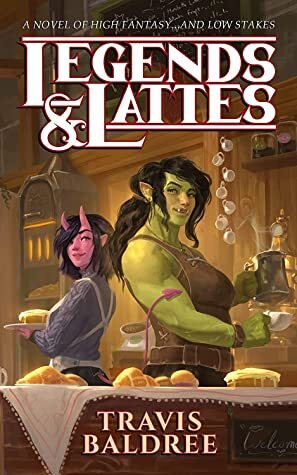 I always find going back and reading my own books a bit of a painful process since I tend to find a lot of places where things could always be better. Similarly, how did it feel to narrate your own work for a change?
I always find going back and reading my own books a bit of a painful process since I tend to find a lot of places where things could always be better. Similarly, how did it feel to narrate your own work for a change?It was actually the easiest narration I’ve ever done. The author’s intent was never, ever in doubt, and I knew everyone’s voices and mannerisms. When writing, I was basically narrating in my head. It was the most pleasant audiobook I’ve ever narrated.
Seanan McGuire has been a huge champion for L&L on twitter and elsewhere, which is awesome. How’d you manage to score that?I had nothing to do with it! Pure good fortune on my part. She saw my initial offhanded post about the cover artwork on Twitter and mentioned it – and then later picked up the paperback and said very nice things – and I will be eternally grateful to her. She’s an amazing author, and a kind person who looks out for others, and I hope I get to thank her personally one day.
Did you have any ambitions of traditionally publishing Legends & Lattes, or was indie pubbing it at first always the goal?I didn’t – not even a twinkle in my eye. I only self-published it because I wanted to go through the full process many of the indie authors I work with go through, largely out of curiosity. I just hoped to pay for the cover artwork and sail obliviously on.
L&L has since been acquired by Tor. How’s that process going, and what can we expect from the trad-pubbed version due out in December?It’s going well, and I’ve really enjoyed e-meeting everyone there. I can’t really say anything specific about the new version that’s coming – they’ll announce any particulars – but I’m excited to see how it all works out! They have all been very lovely and heroically getting things done in a VERY accelerated way.
So…we started with an obvious question. Let’s end with one. For symmetry! What’s next?I’m knee-deep in preparing the next book, and generally mortally terrified now that there are actual expectations. I’ve got a pile of notes and a huge outline and I’m hoping to start in on the daily writing very soon…
Read Legends & Lattes
The post Interview With Author Travis Baldree appeared first on BEFOREWEGOBLOG.
Review – PLEASE DON’T TELL MY PARENTS I’M A SUPER VILLAIN by Richard Roberts
PLEASE DON’T TELL MY PARENTS I’M A SUPER VILLAIN is a work which I think is probably the best superhero fiction out there barring possibly SOON I WILL BE INVINCIBLE and my own work (but I have to say the last). It’s funny, cute, and just plain full of joy whereas so much else in the genre is dark or dry. This is not a work deconstructing the grimdark world of saving people or with great power coming great responsibility, it’s about fun and how awesome it is to be a supervillain (or hero but mostly supervillain).
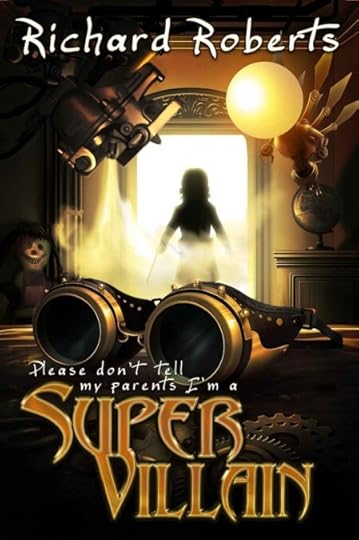 Did I mention the protagonists are middle schoolers? Yeah, you would think that would be an automatic turn off as the only thing adults hate more than reading about children is reading about children who are going against adults. However, the Inscrutable Machine (the kids’ team) is such an adorable group of fun that I don’t mind reading about them across five or six books. It’s almost like superheroes can be for enjoyable without grimdark angst! Who knew!
Did I mention the protagonists are middle schoolers? Yeah, you would think that would be an automatic turn off as the only thing adults hate more than reading about children is reading about children who are going against adults. However, the Inscrutable Machine (the kids’ team) is such an adorable group of fun that I don’t mind reading about them across five or six books. It’s almost like superheroes can be for enjoyable without grimdark angst! Who knew!
The premise is Penelope “Penny” Akk is the daughter of two of the most respected superheroes on the planet, both of whom are super geniuses. Penny is anxious to become a superhero but her parents have no interest in letting her try to become one until she’s an adult. However, she is precocious and attempts to stop a minor crime at the Science Fair with her best friends Ray and Clair–which results in her being branded as a pint-sized supervillain.
I love the central characters and their not-inconsiderable talent at being bad guys despite the fact they’re not even old enough to get a learner’s permit to drive. Supervillainy is depicted as a fun pasttime and not an act of evil, which is assisted by the criminal organizations of the city being more dastardly than vile. Characters like Spyder, LucyFar, and others are just plain awesome and help cement this goofball Silver Age world.
I particularly liked the character of Generic Girl, who is basically Supergirl and someone who doesn’t want all the fame and silliness that defines the genere. She wears a hoodie, runs around stopping crime, and just does good things for people. It’s a great concept and her storyline makes me feel sad for her as it’s clearly taking its toll on her. Watching her deal with the increasing antics of the Inscrutable Machine is also one of the best parts of the book.
Generic Girl: You’re mining a trash heap. Not for uranium, just for junk. Stop pretending to be a supervillain, Penelope. This isn’t a game.
Penny: Then why are you playing, Claudia?
I like the relationship between Ray and Penny as well. Neither of them are really old enough to date but the two of them are obviously attracted to one another and at that awkward stage where it could turn into something else or not. Claire is a character with a great ability too, the power to distract people by looking adorable. The fact she dresses up in a teddy bear onesie makes her even more awesome.
The Inscrutable Machine don’t get into any perilous conflicts of good versus evil but more or less just cause a bunch of mischief. Sometimes, this mischief is bigger than they expected like acquiring an enormously valuable magical relic, but most of the time it barely qualifies as crime. The fact they keep getting a worse reputation is part of the fun and shows how the superheroes in town have gotten complacent. Even if they are led by the smartest couple in the world.
In conclusion, this is a great novel and the start of an equally great series which I’ve enjoyed from the beginning to the end. I think if you want superhero fiction that serves as a pallete cleanser after all the Dark Knights and Superman vs. Batman grit then this is a great one to pick up. The audiobook version is especially good.
Read Don’t Tell My Parents I am a Super Villain
The post Review – PLEASE DON’T TELL MY PARENTS I’M A SUPER VILLAIN by Richard Roberts appeared first on BEFOREWEGOBLOG.



